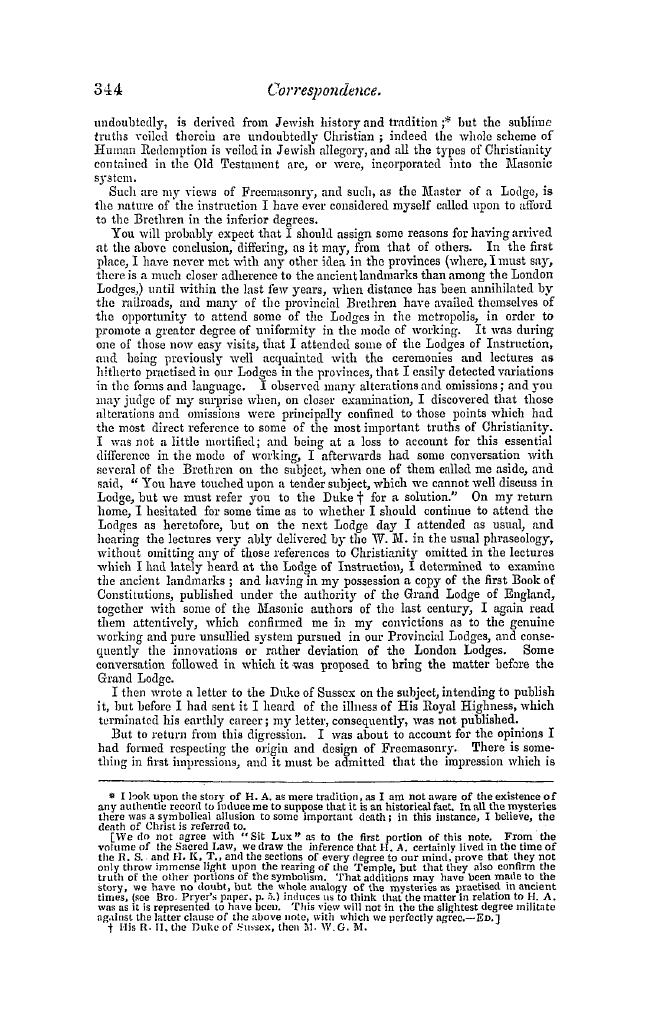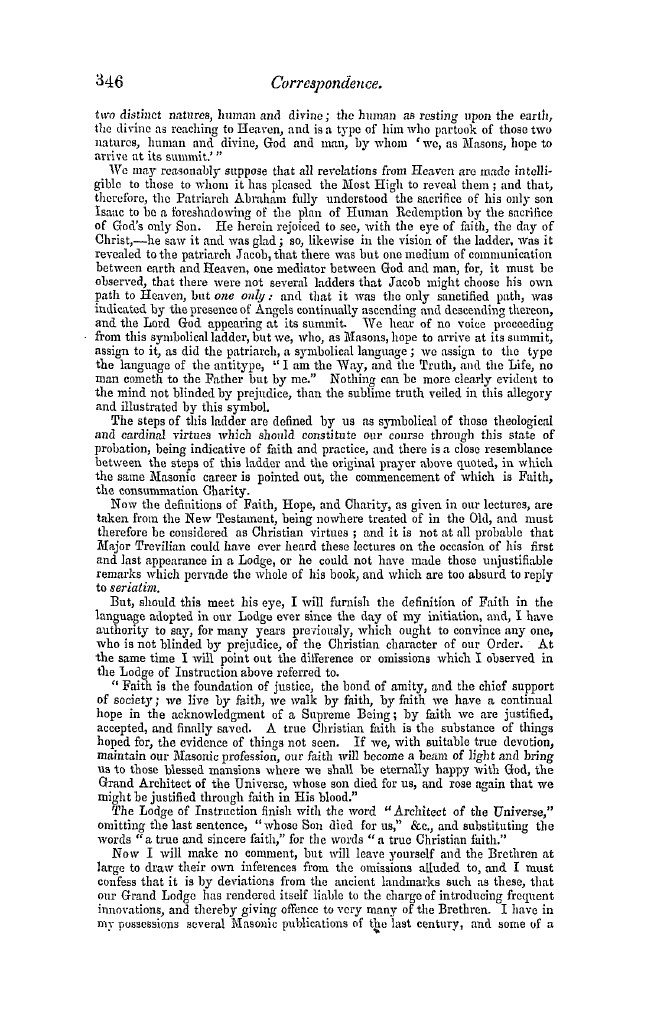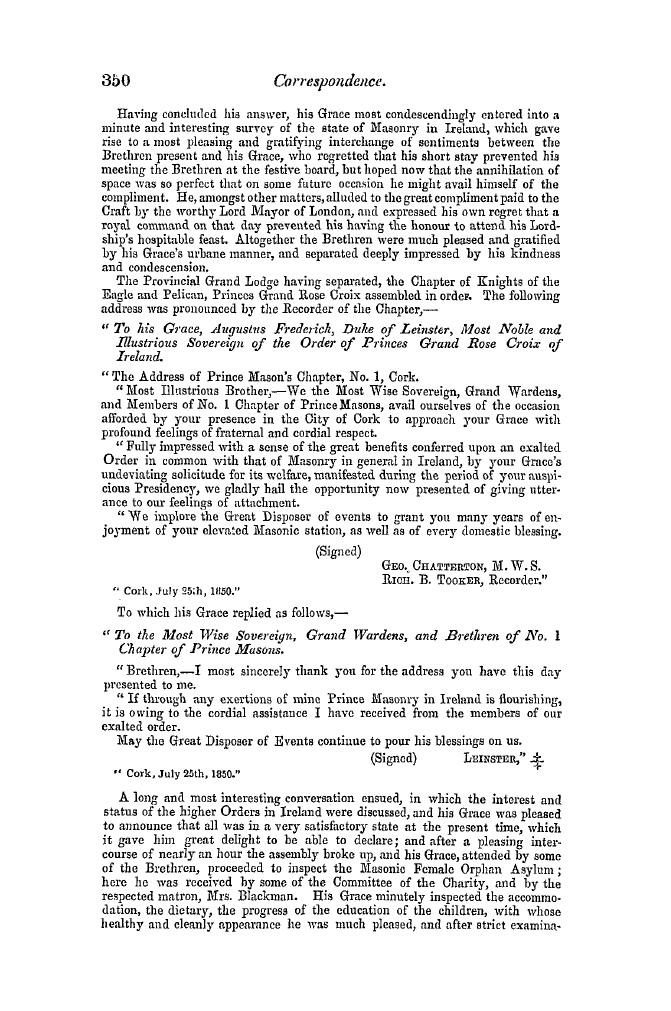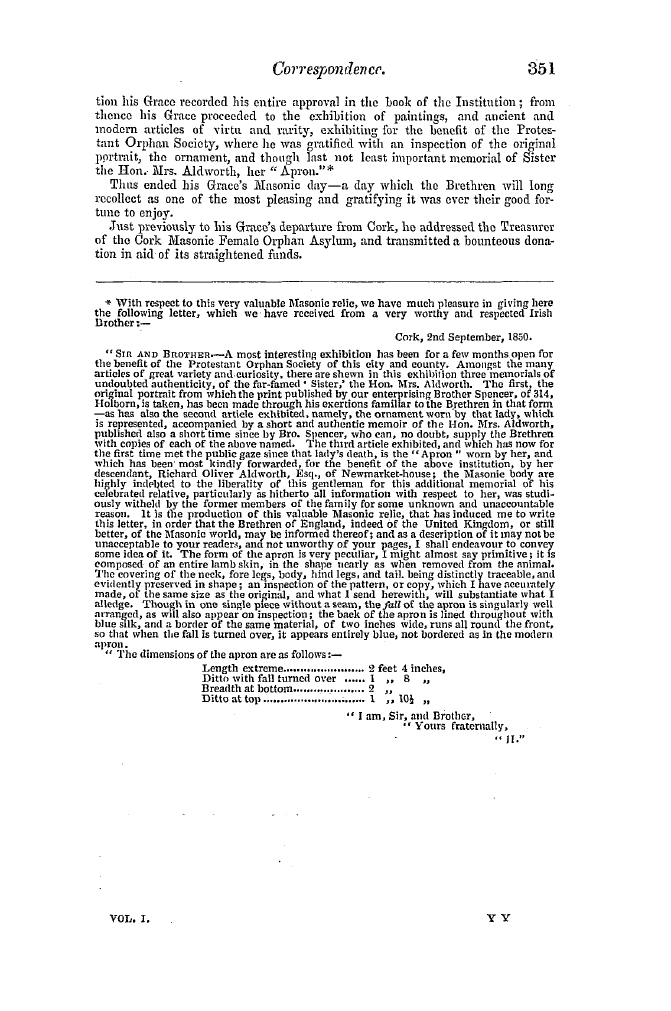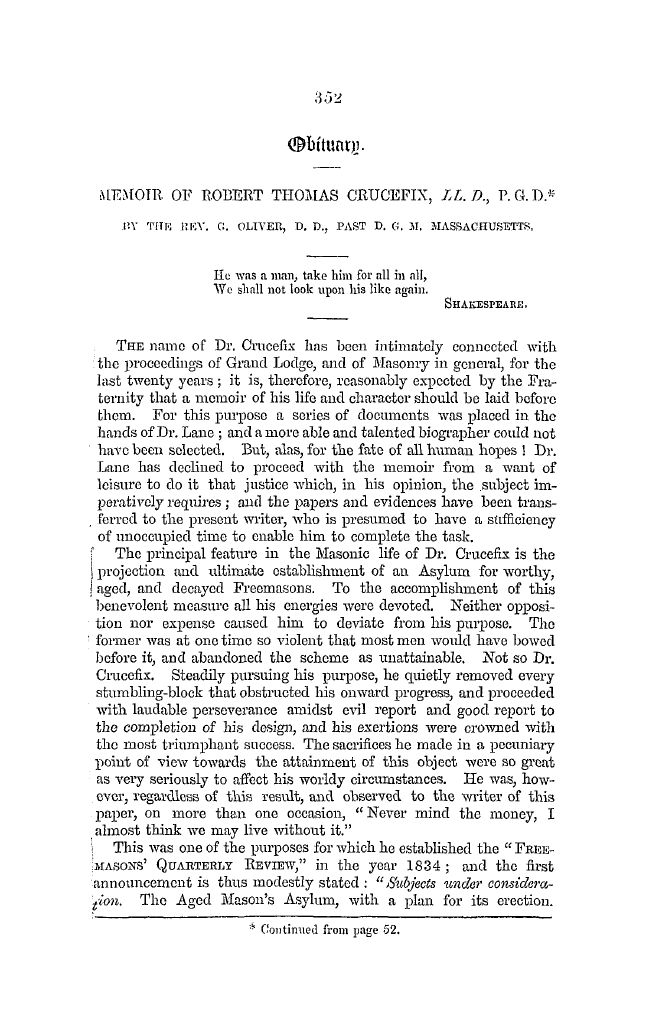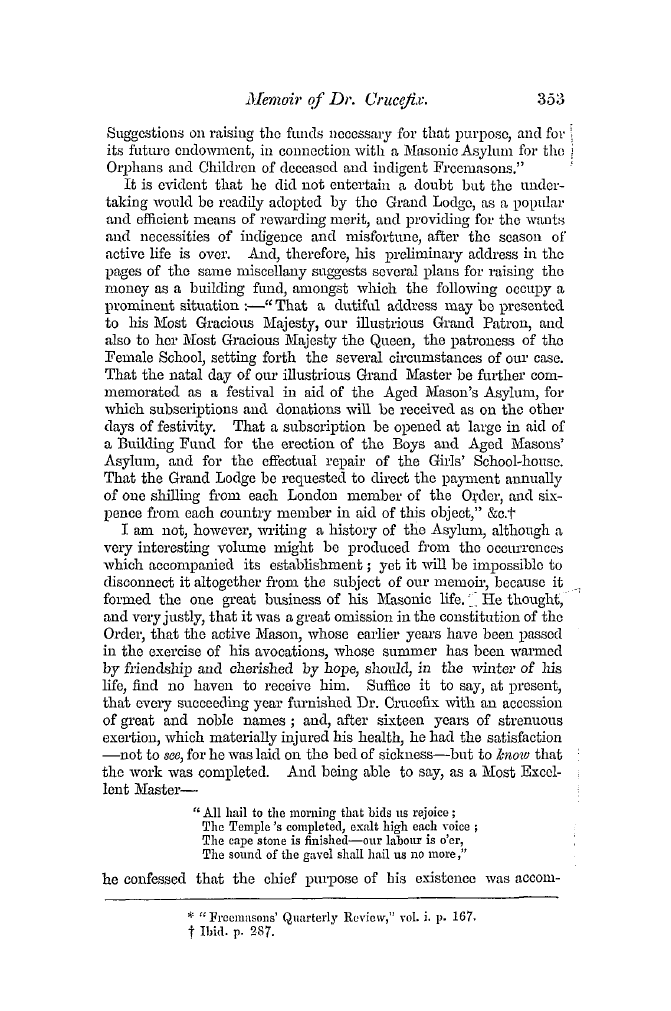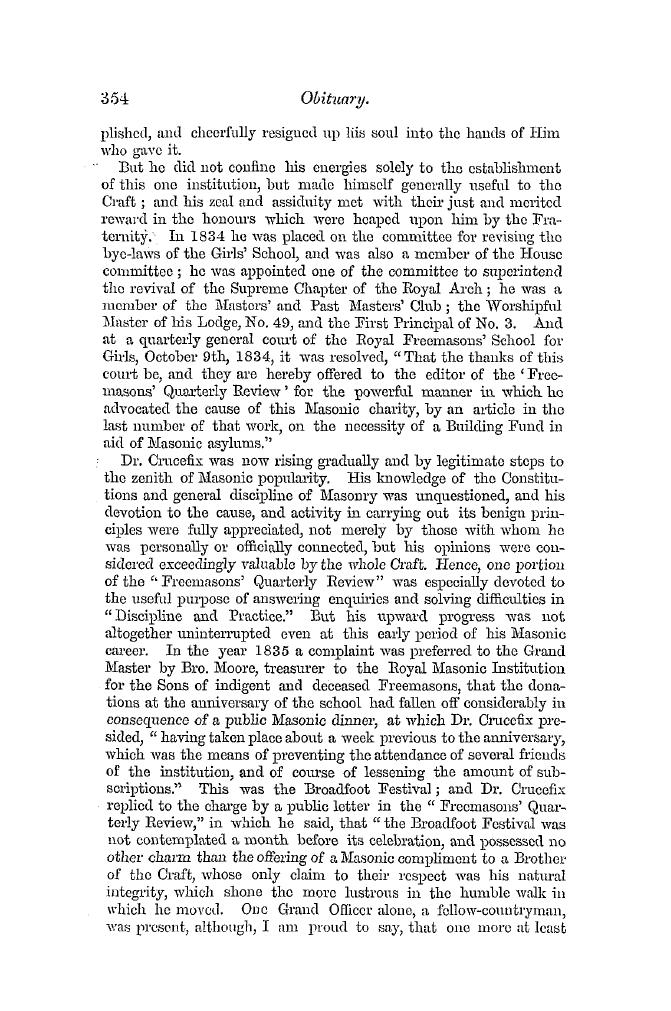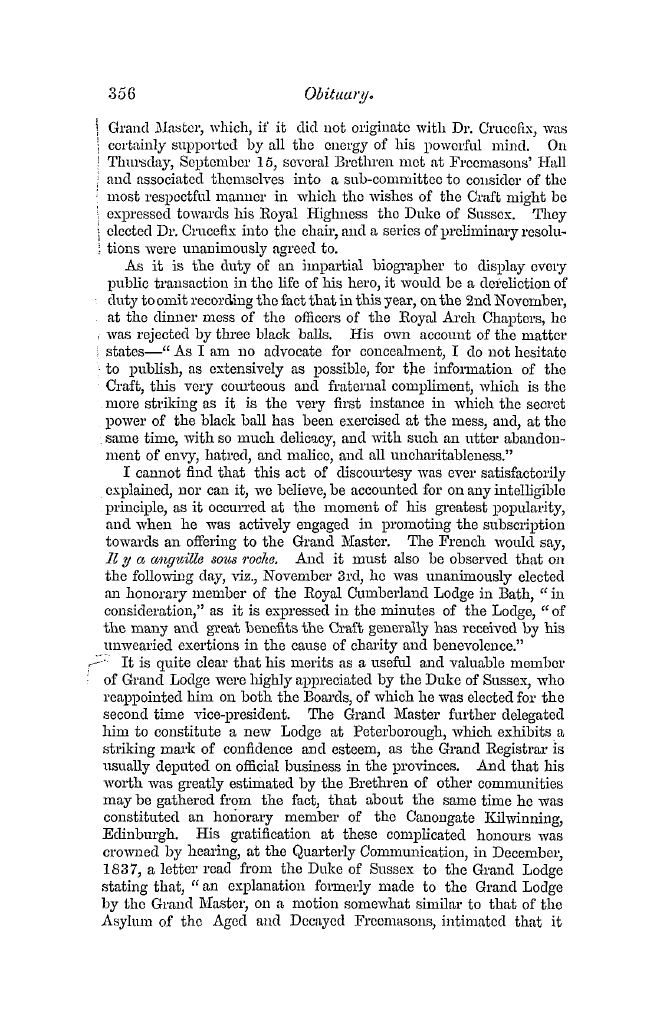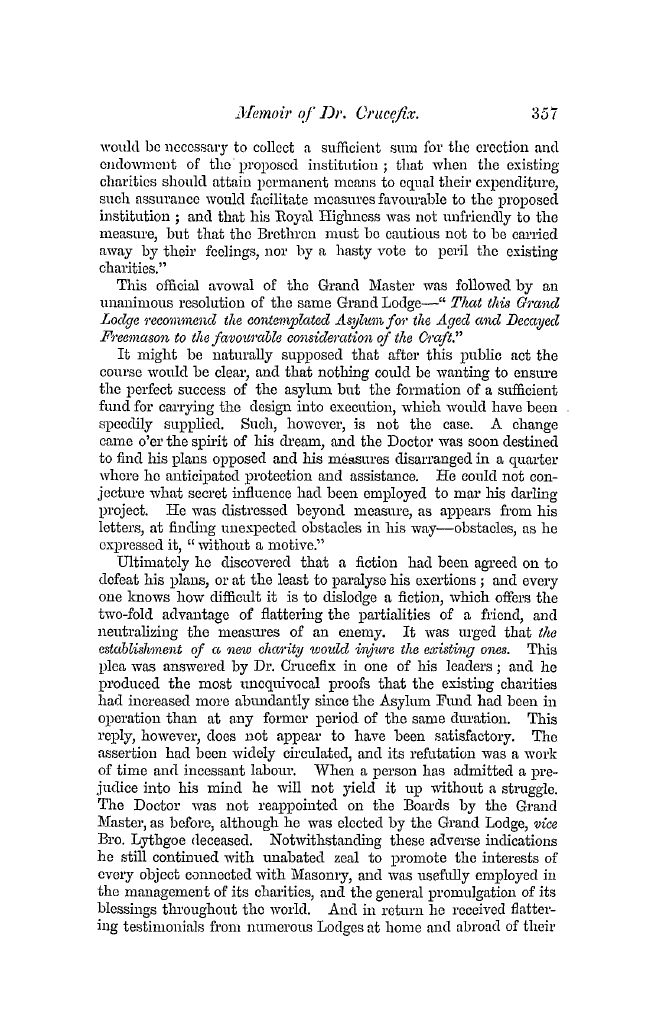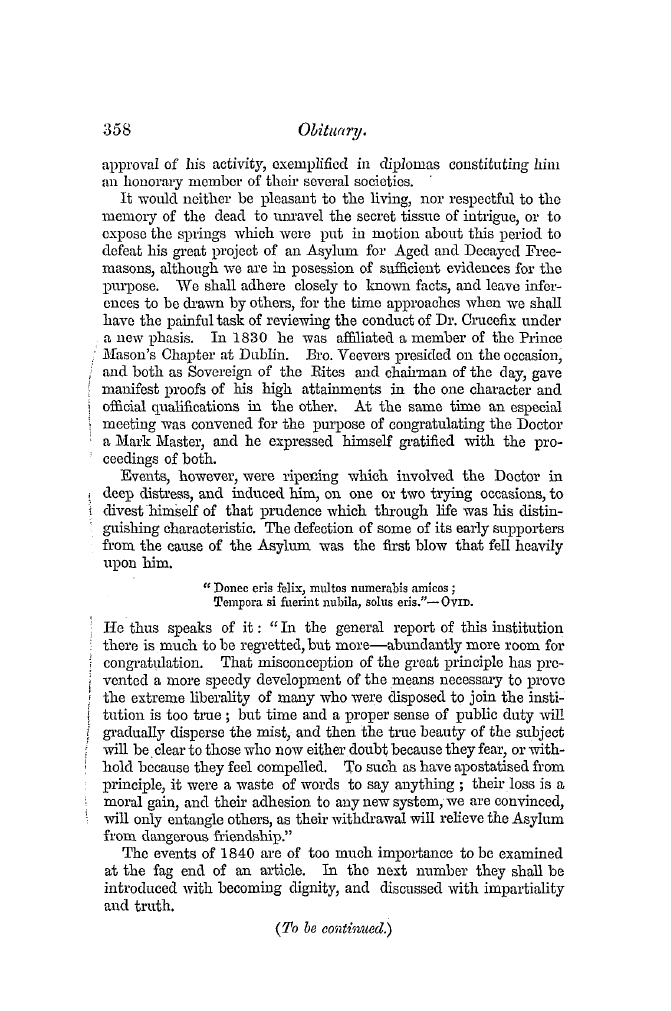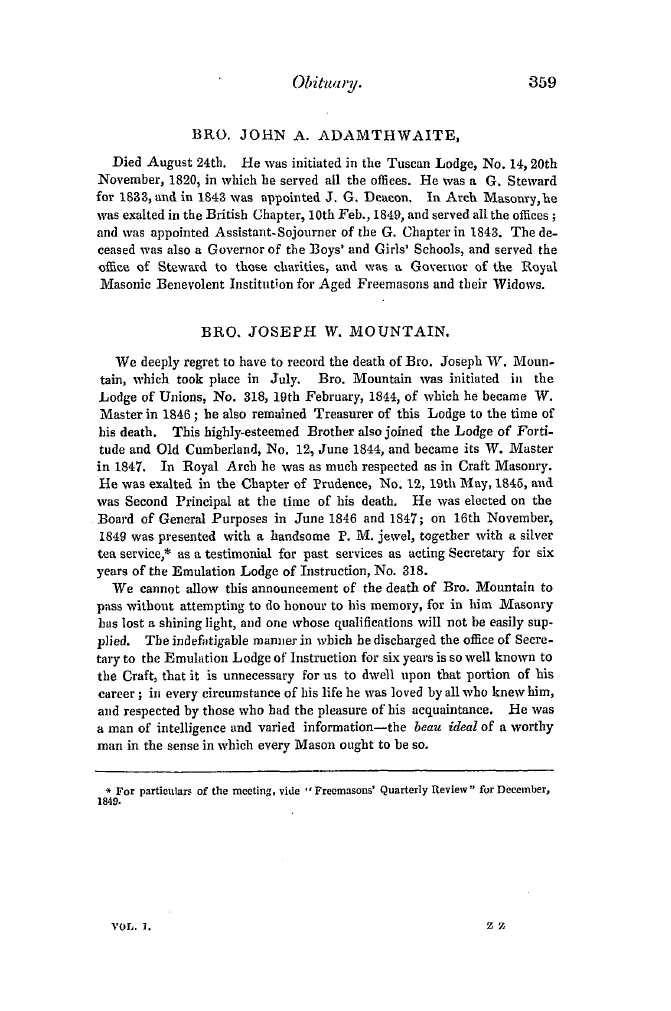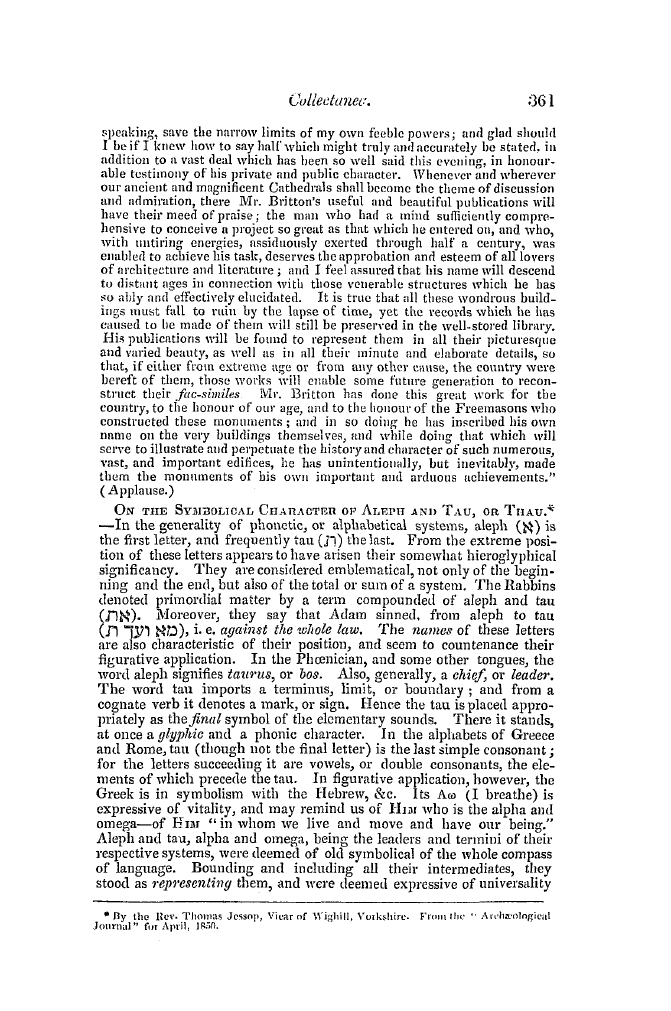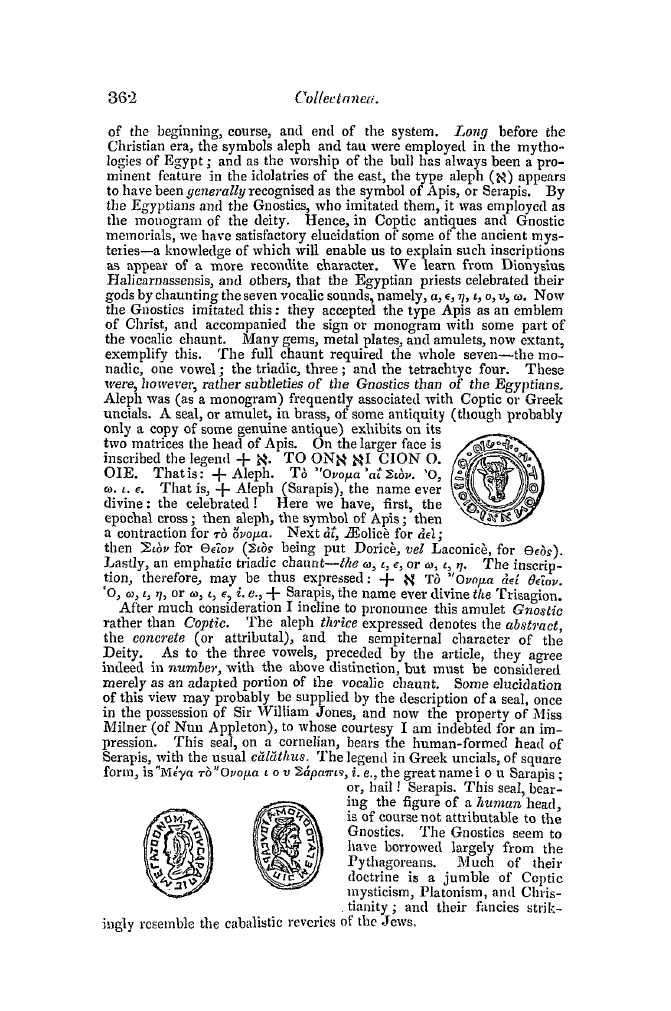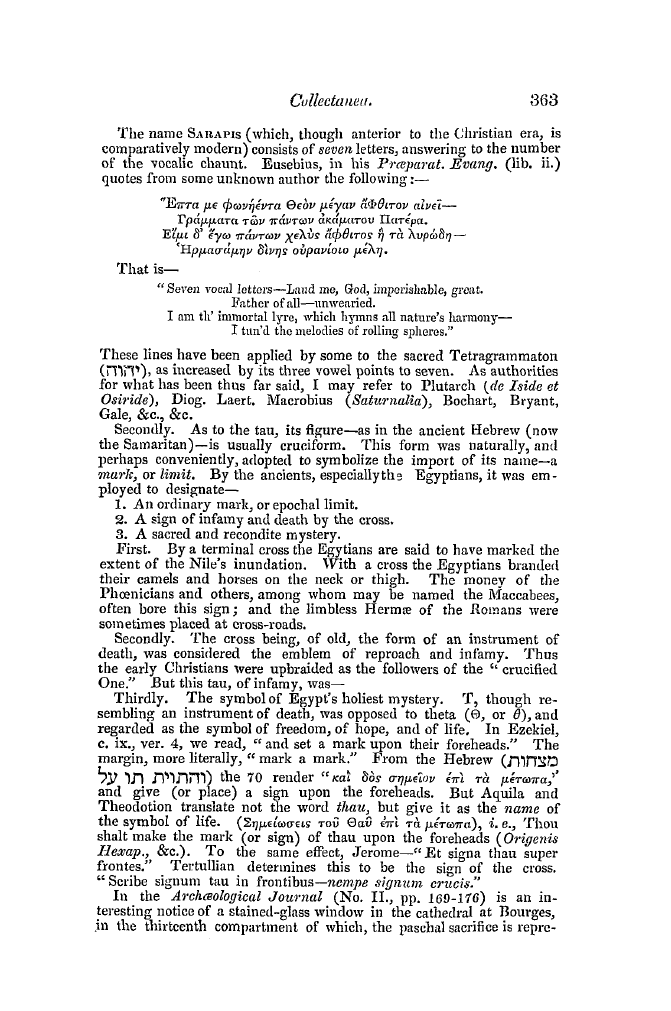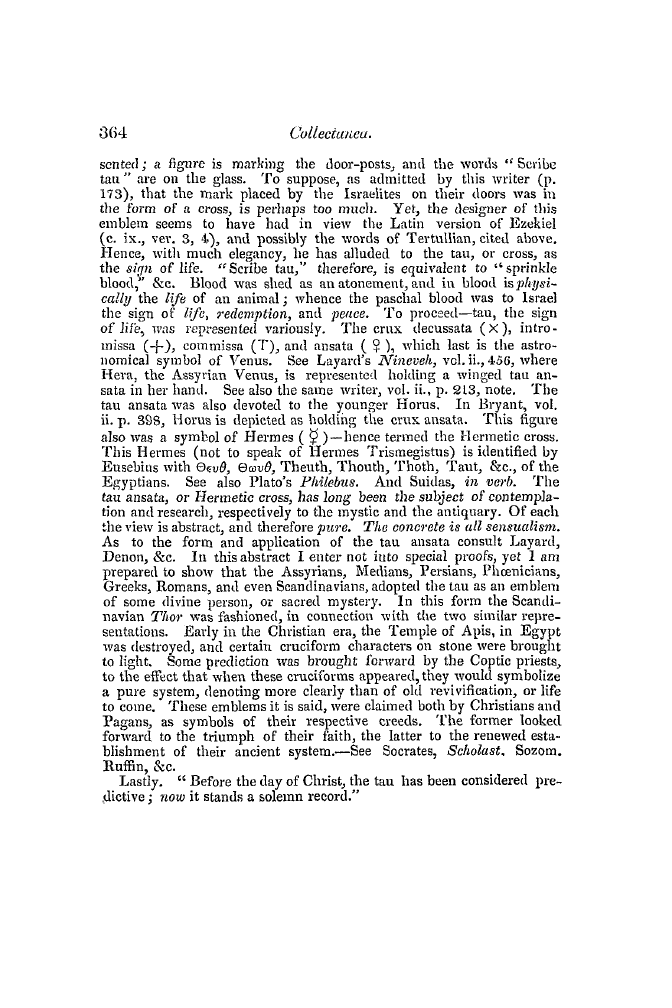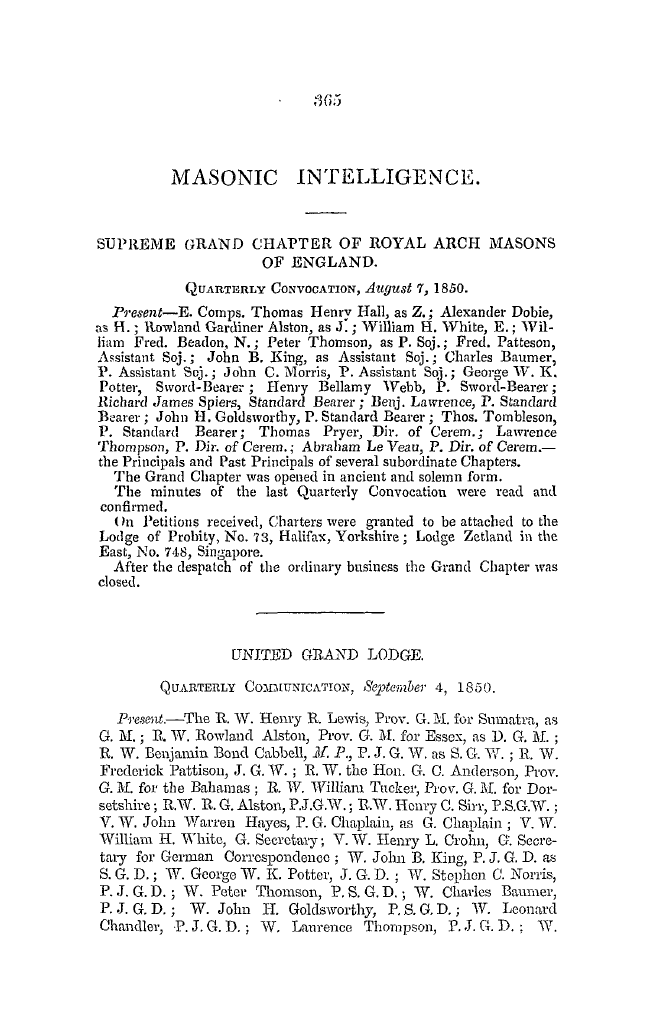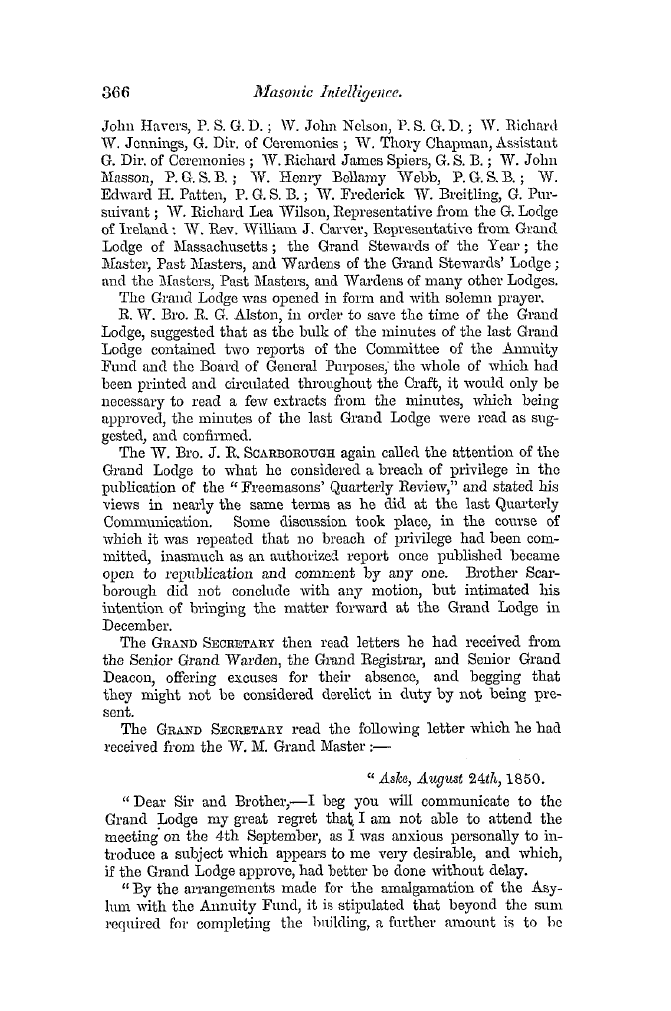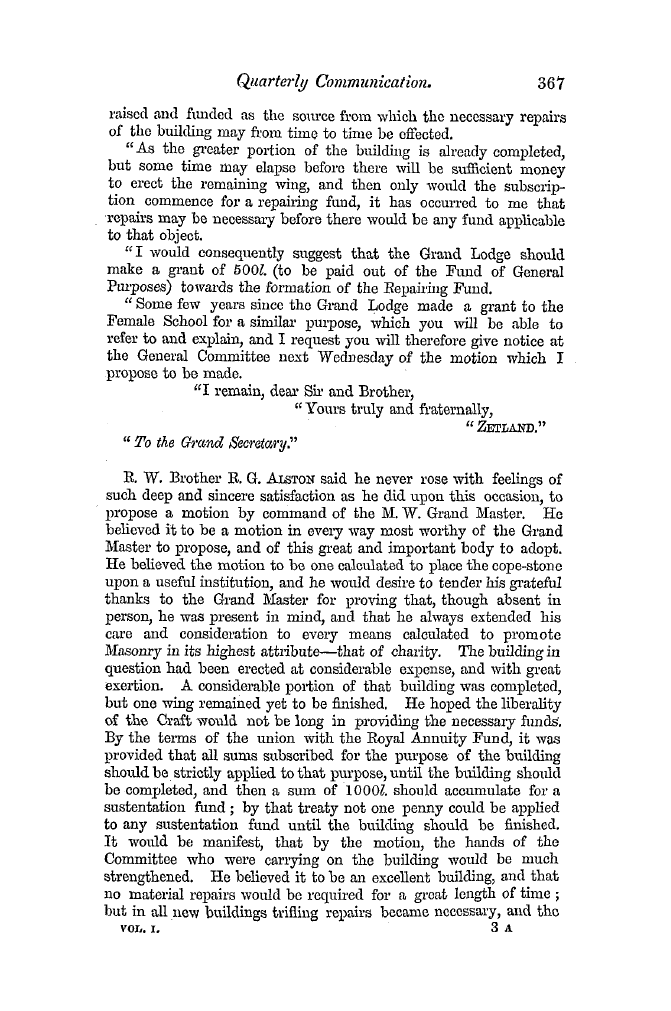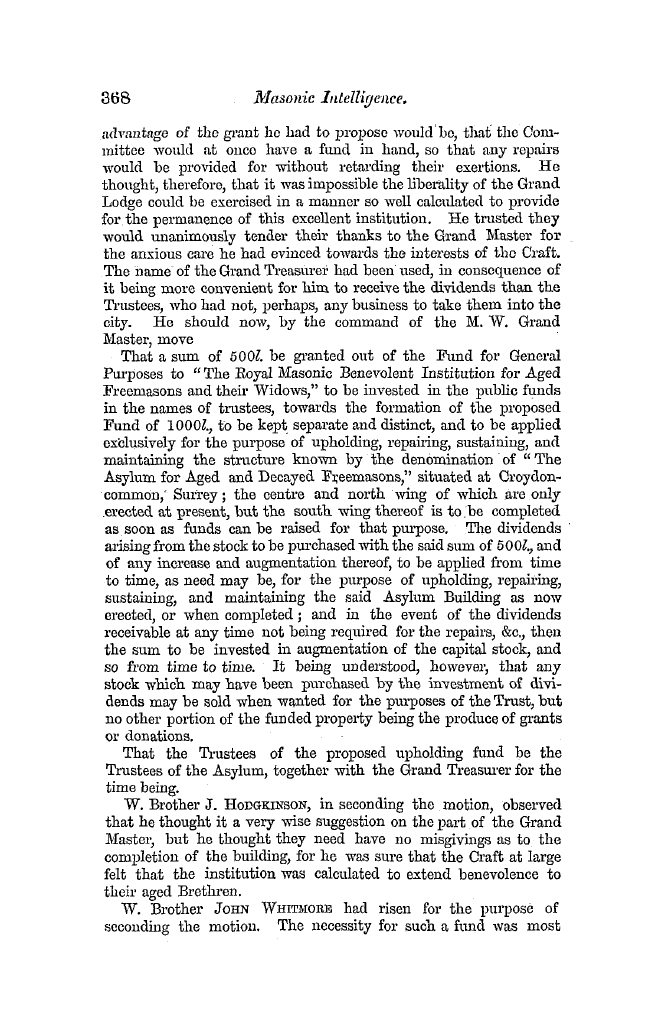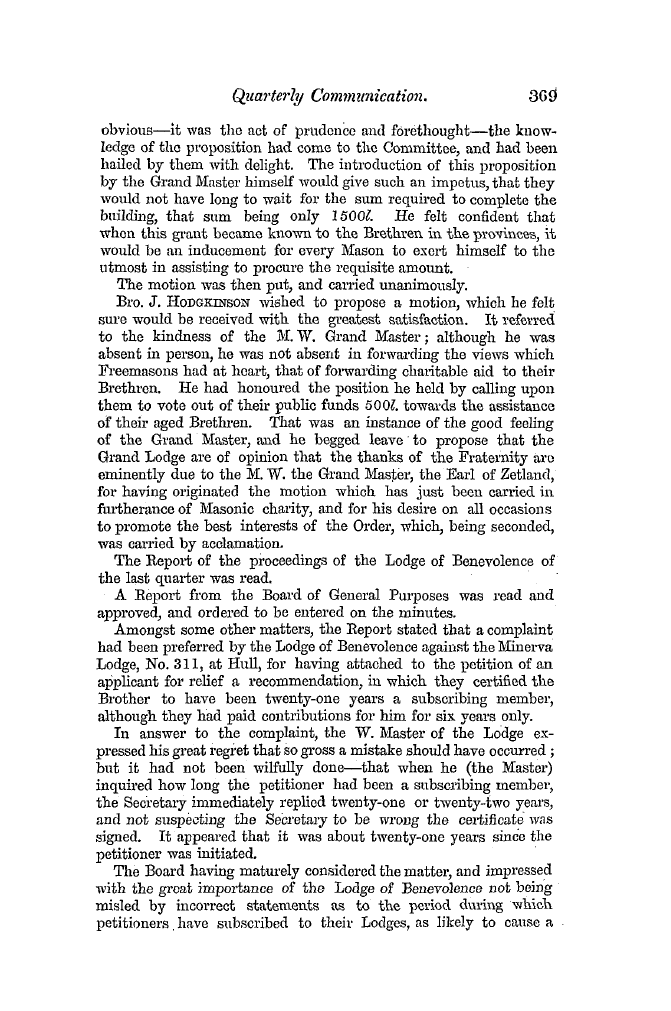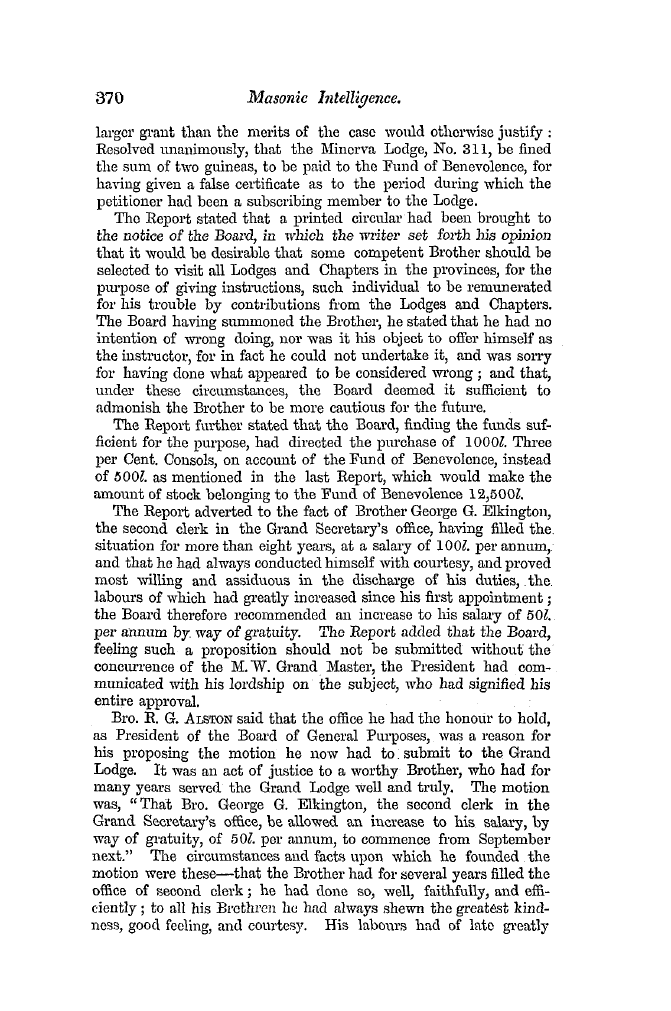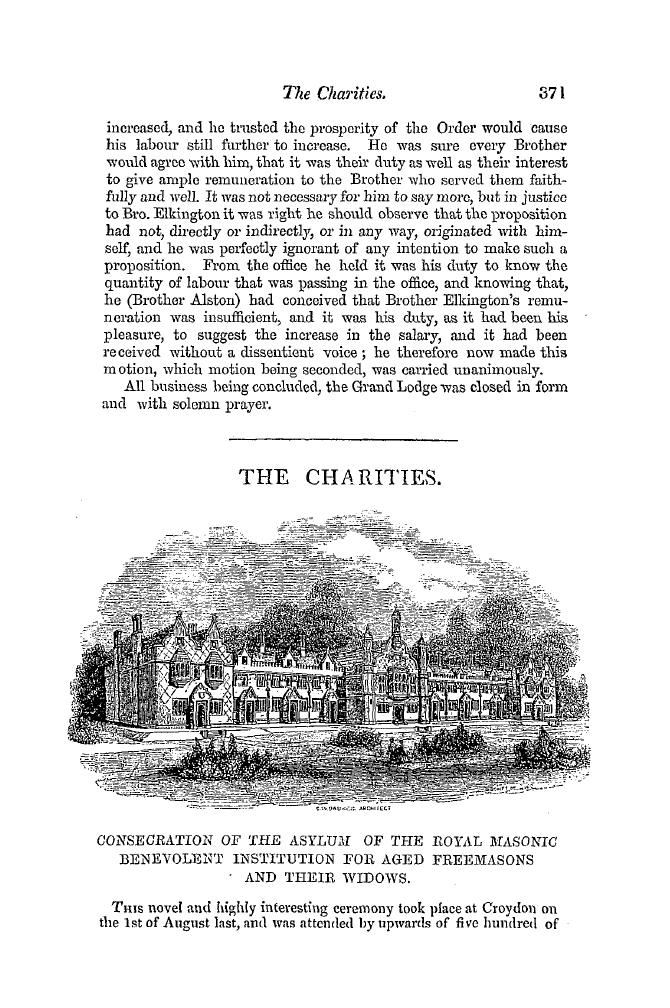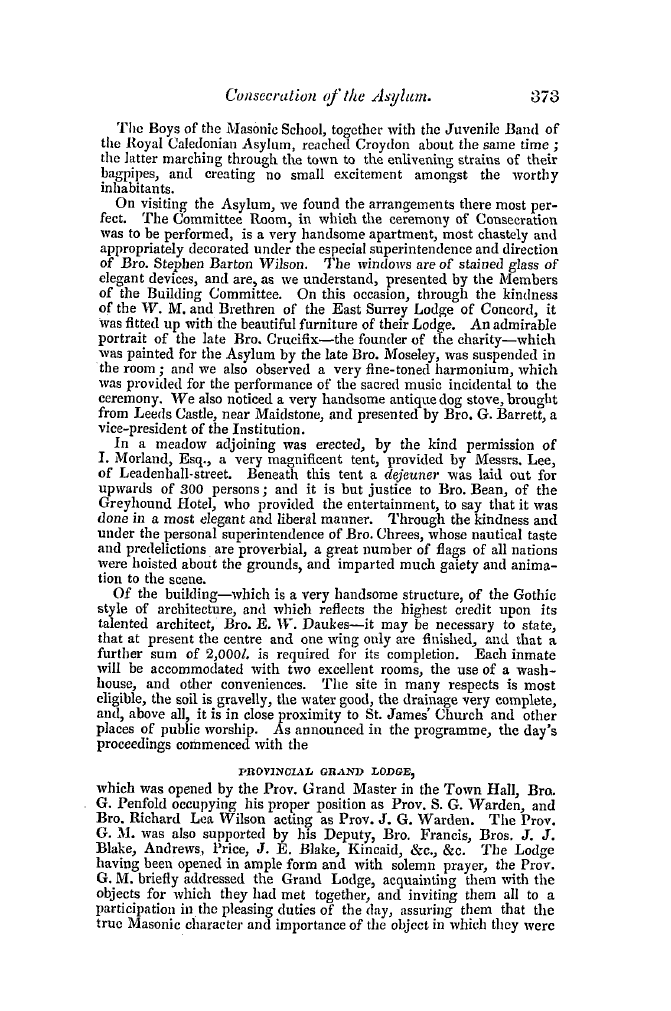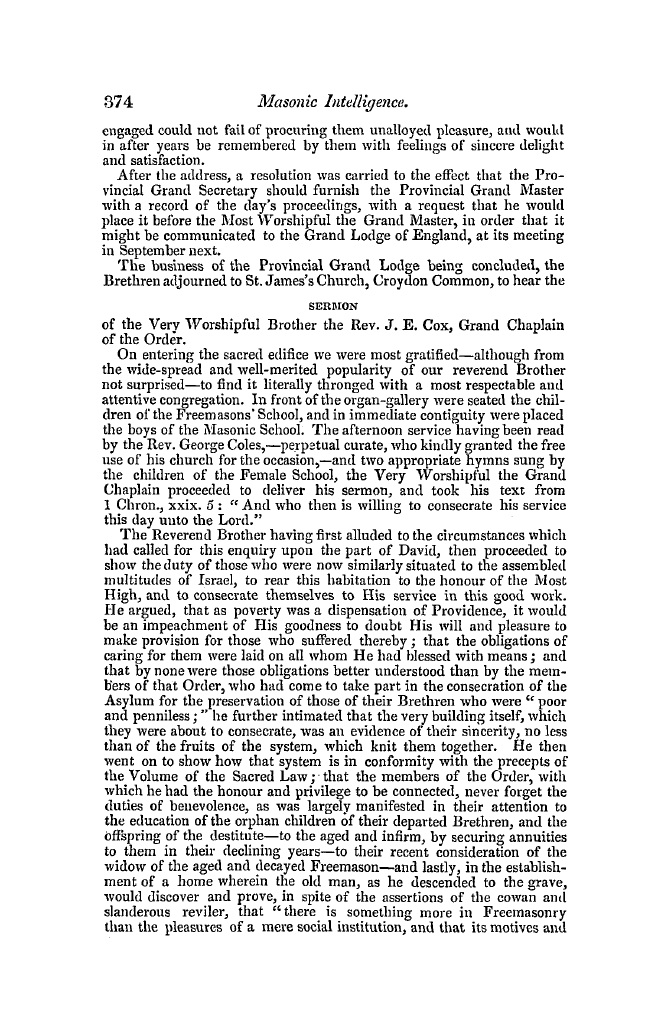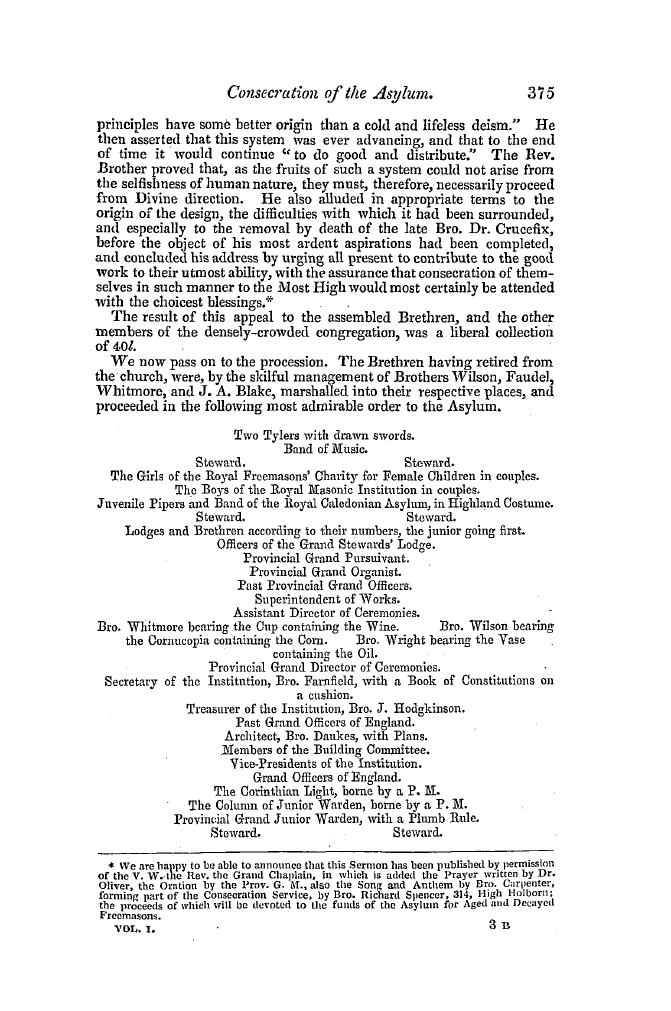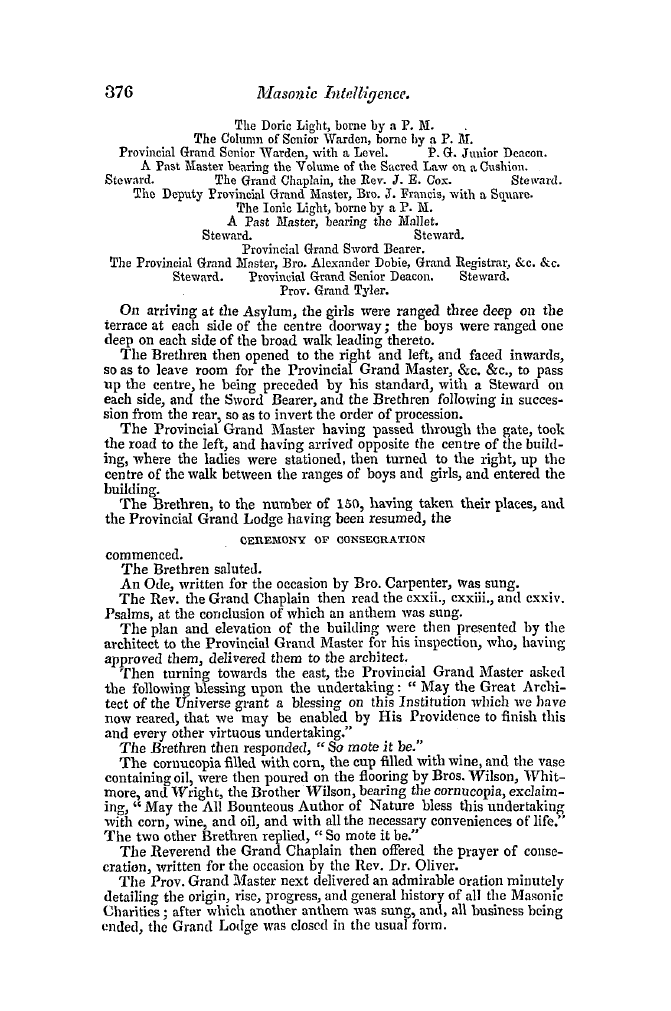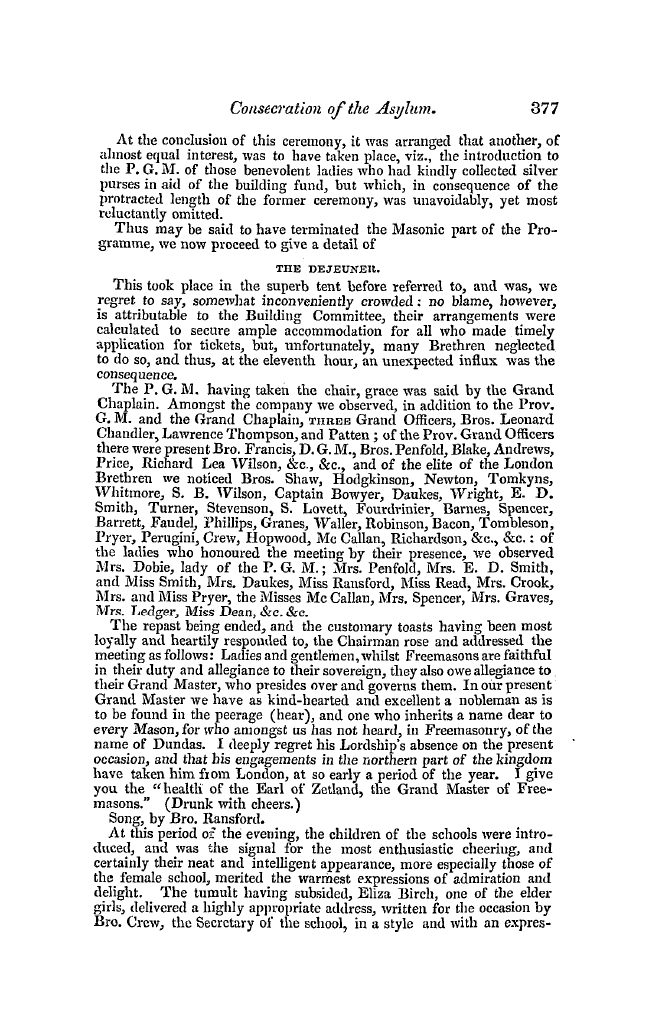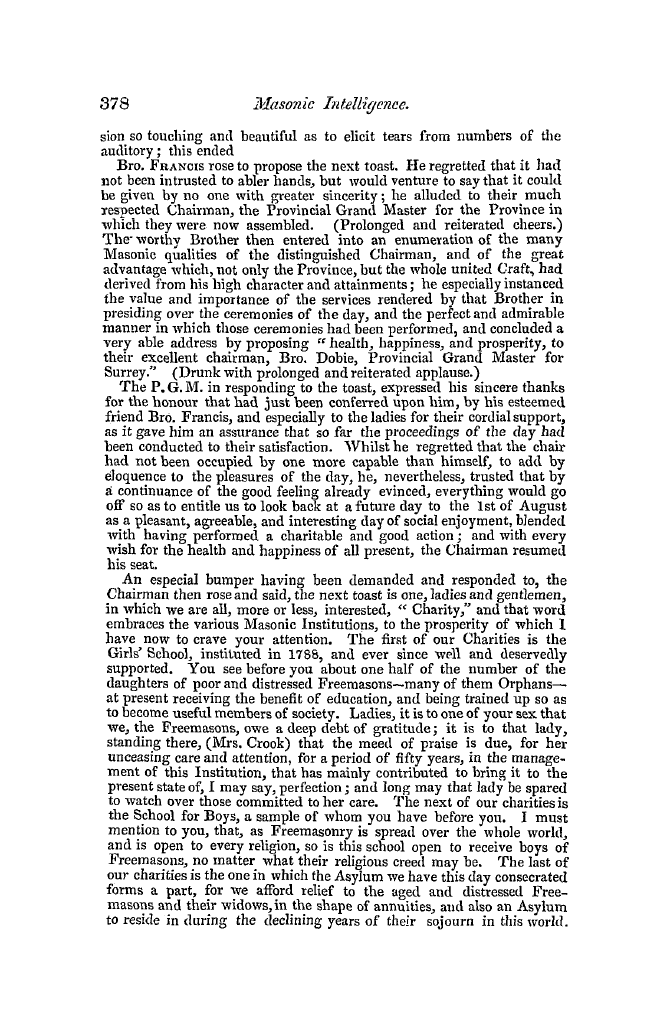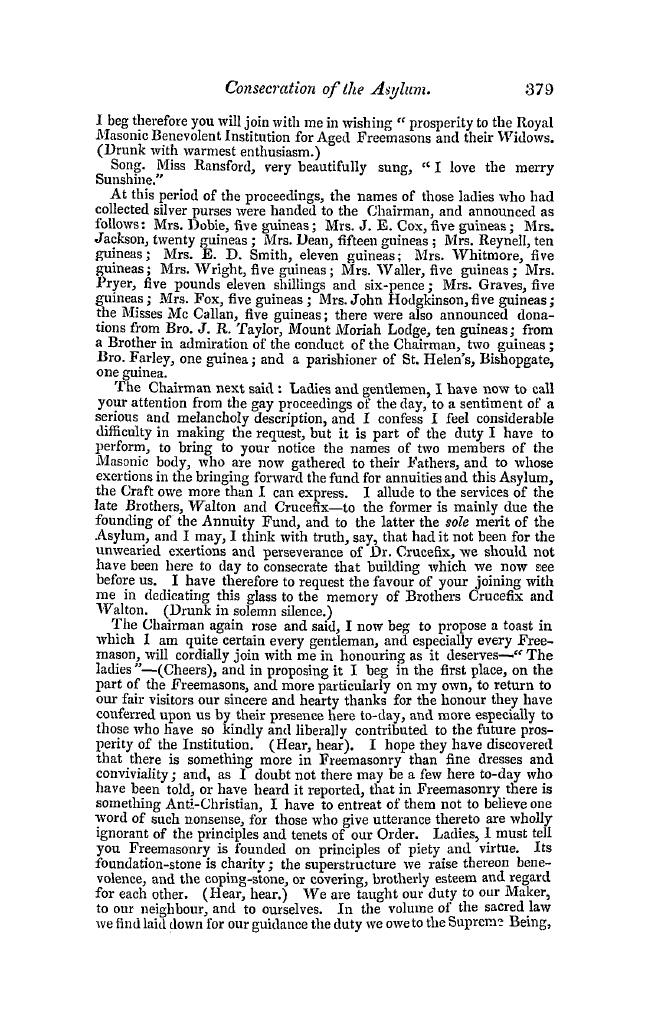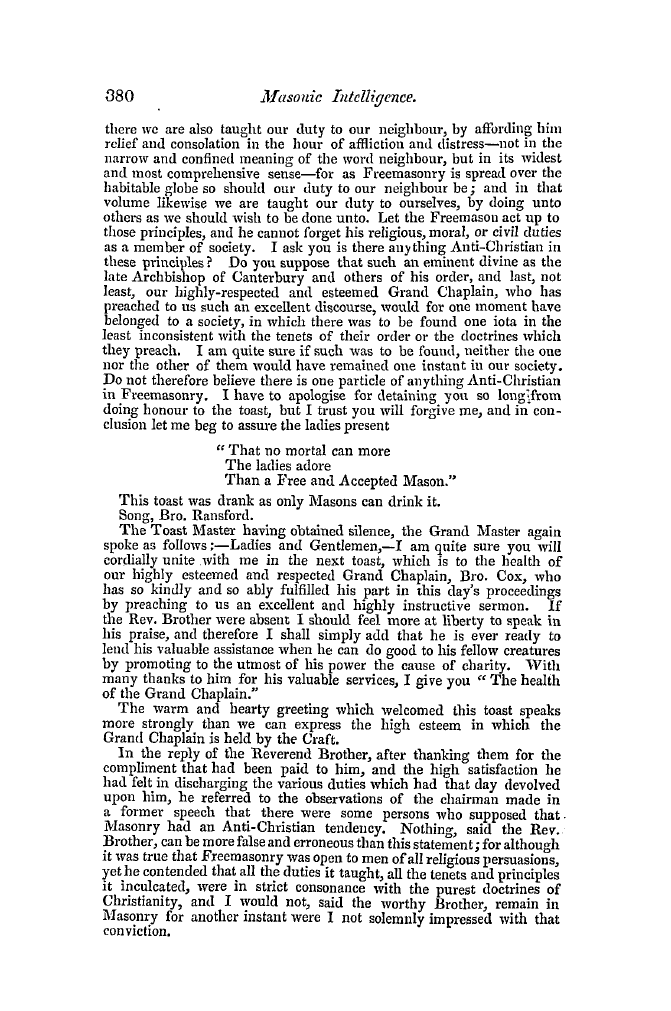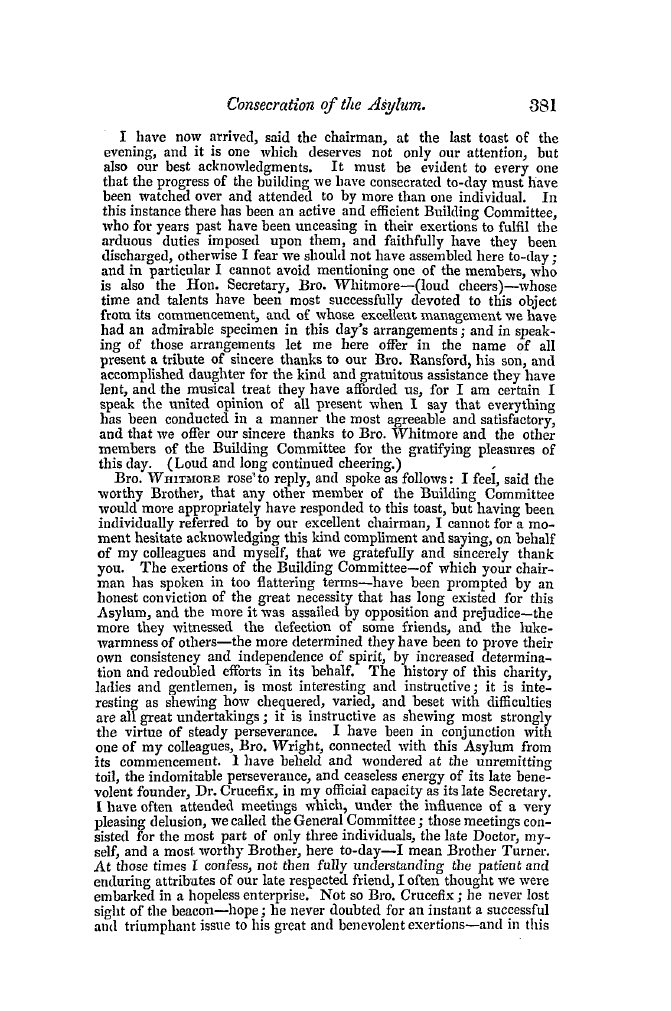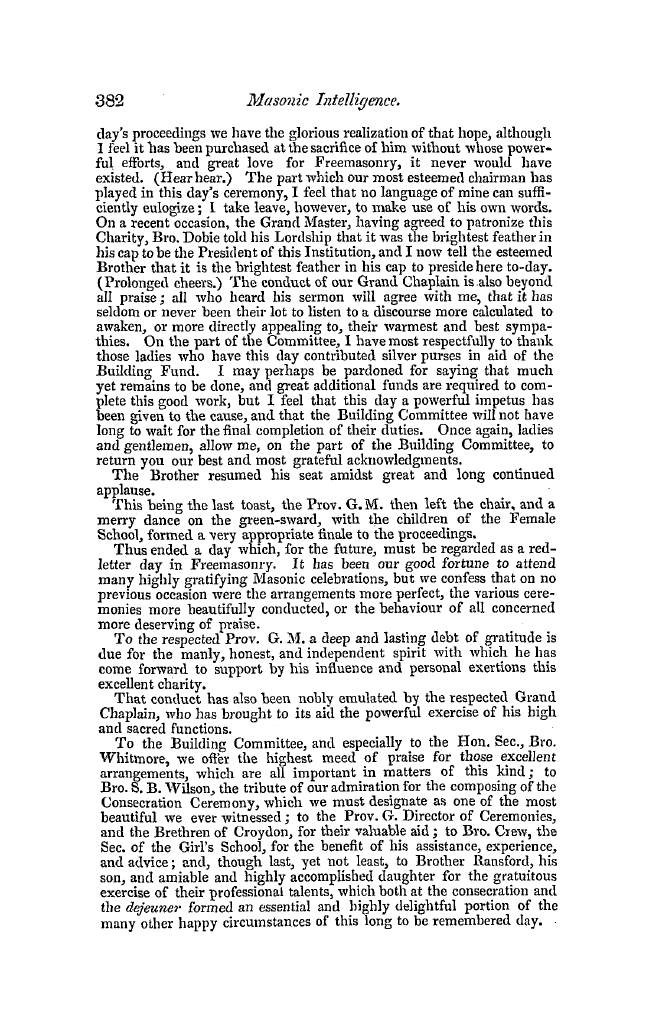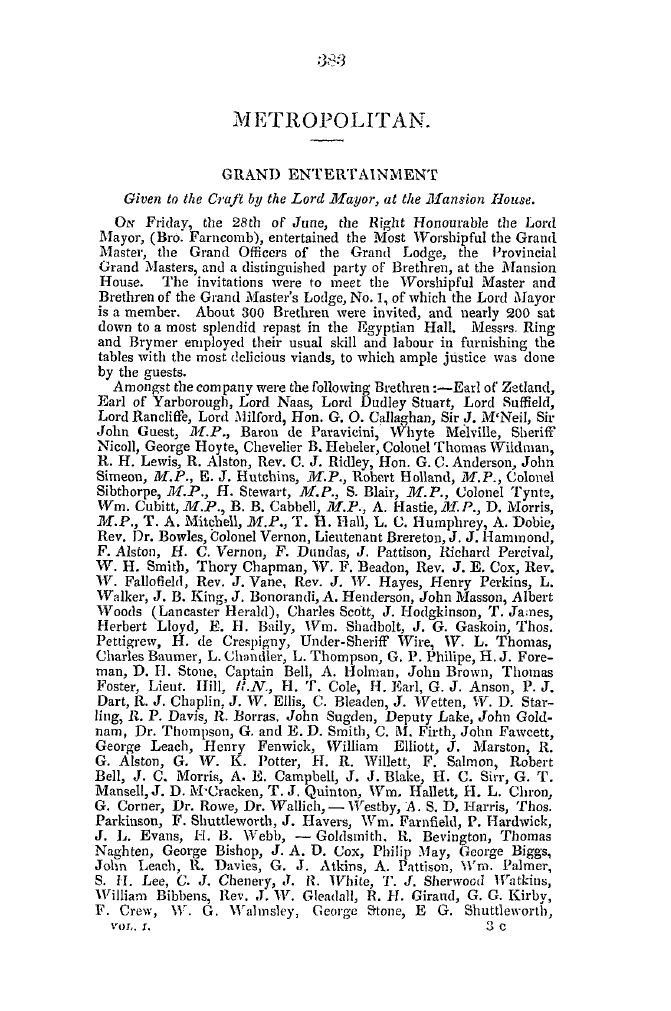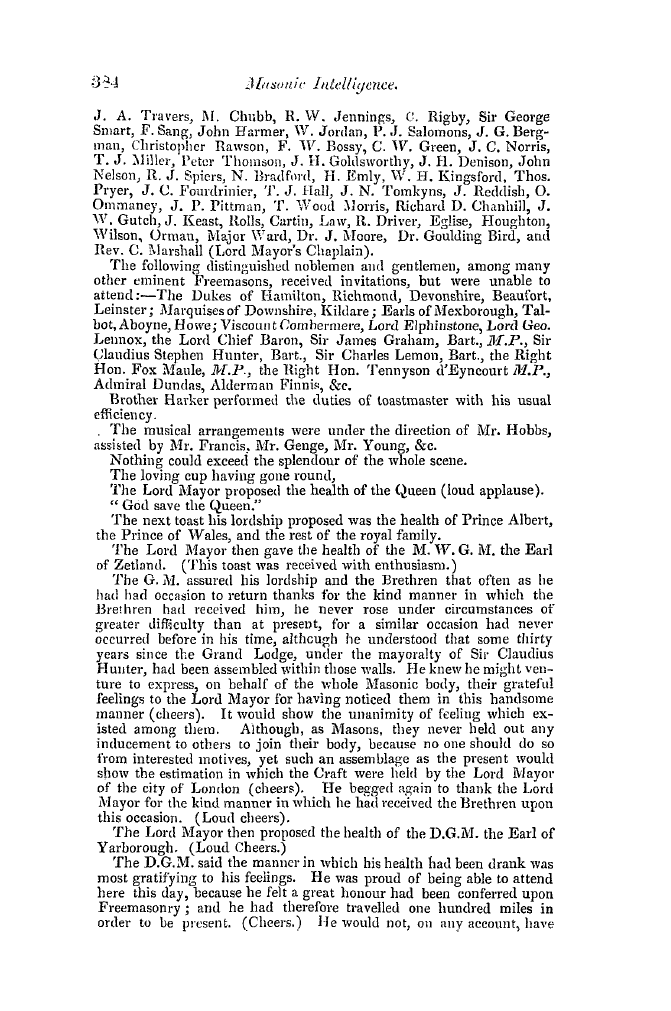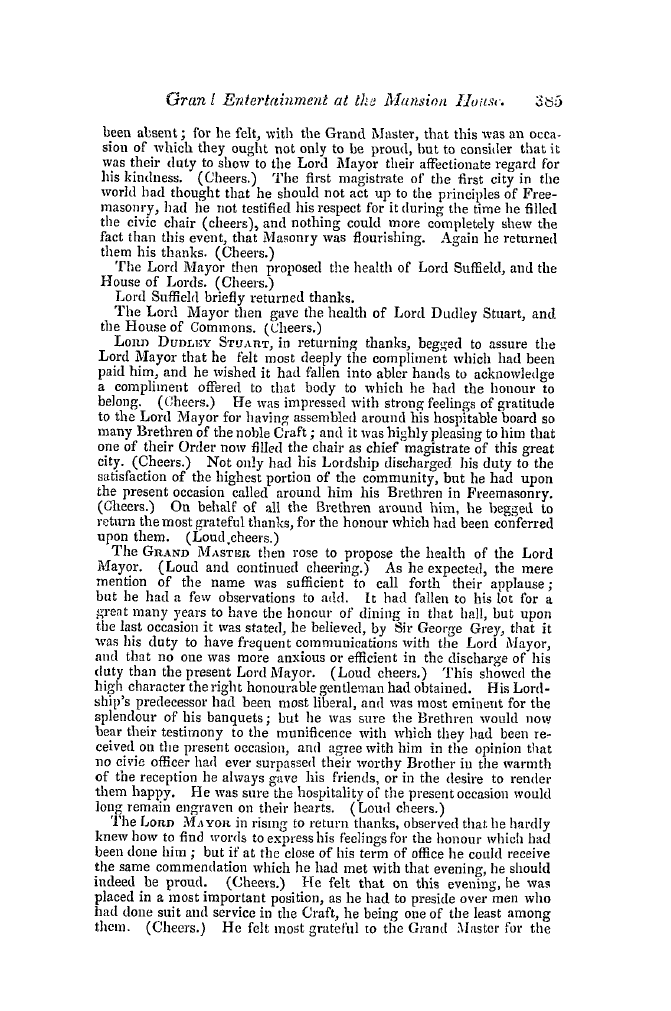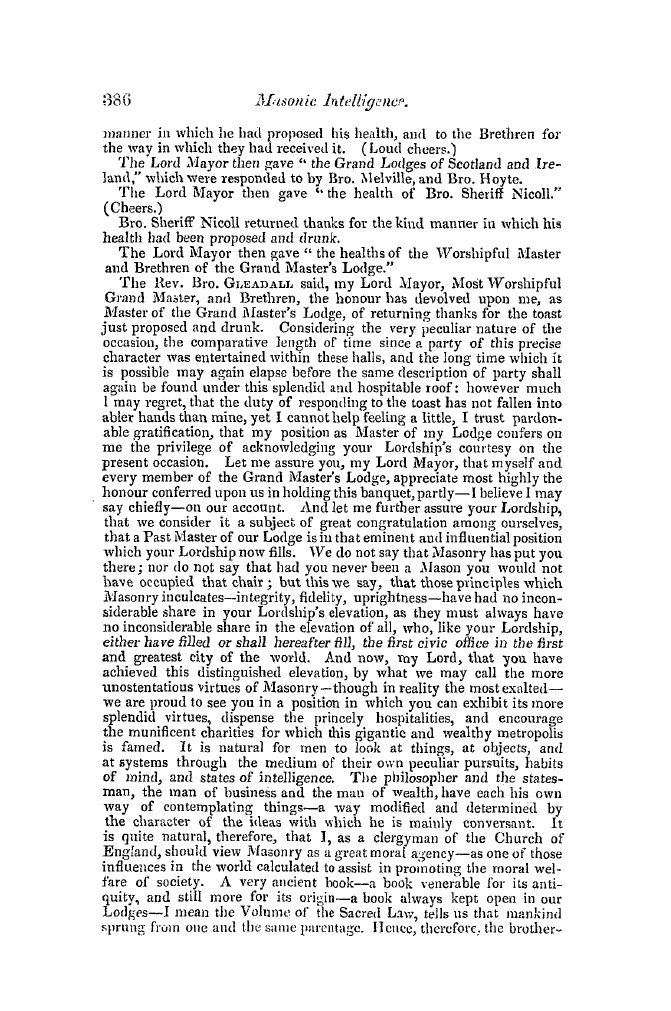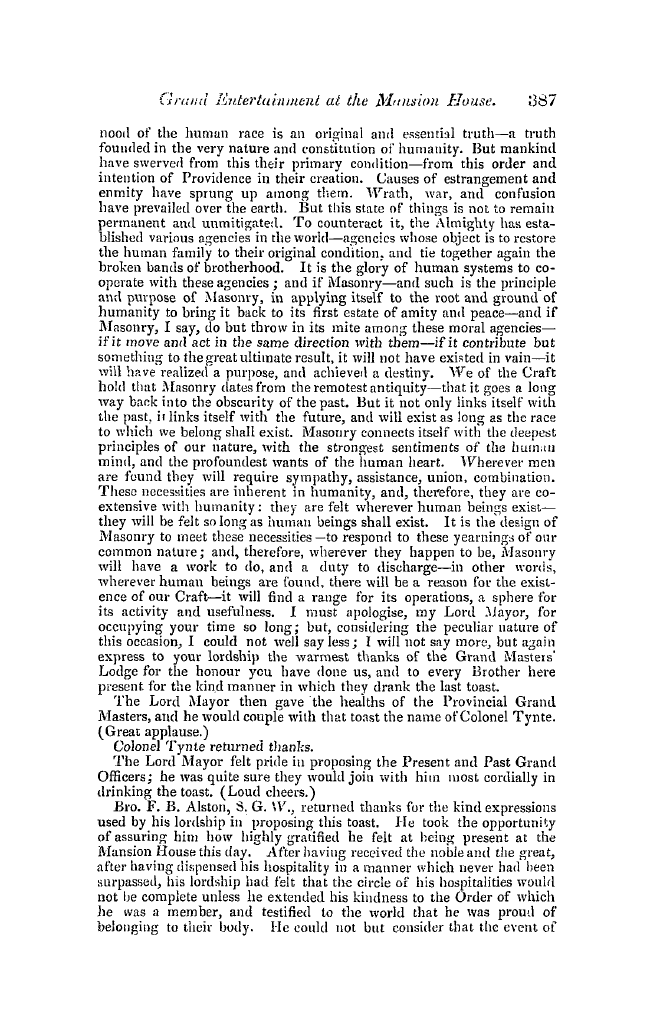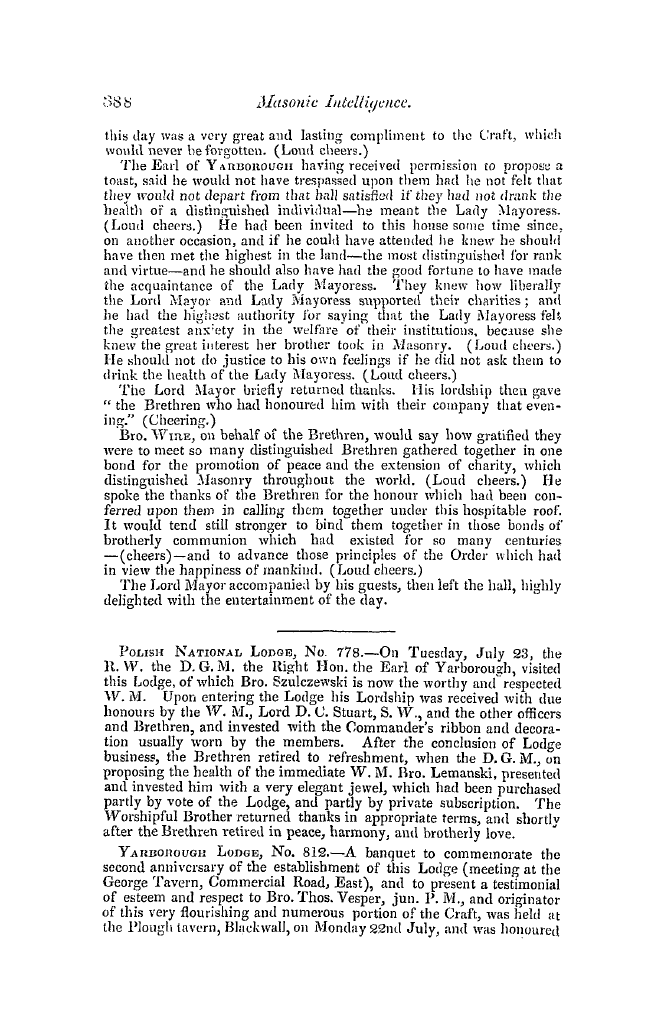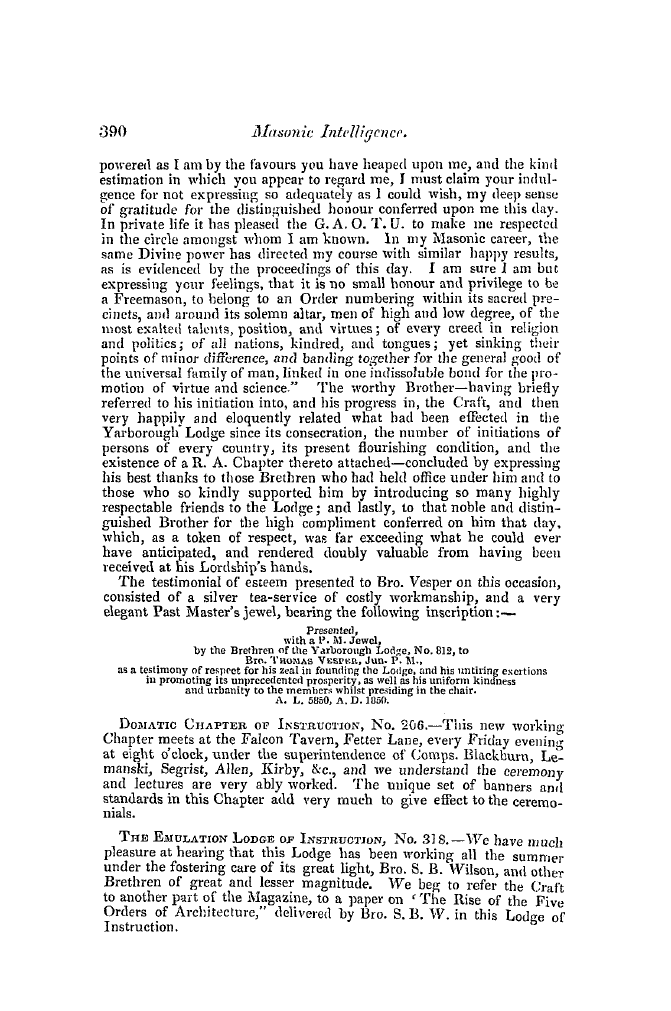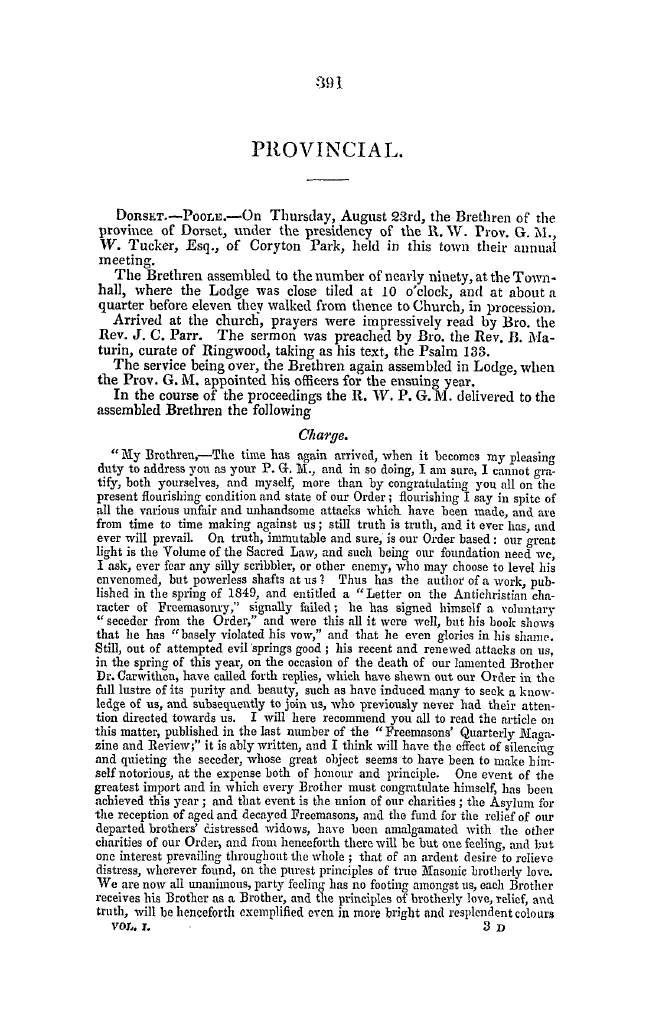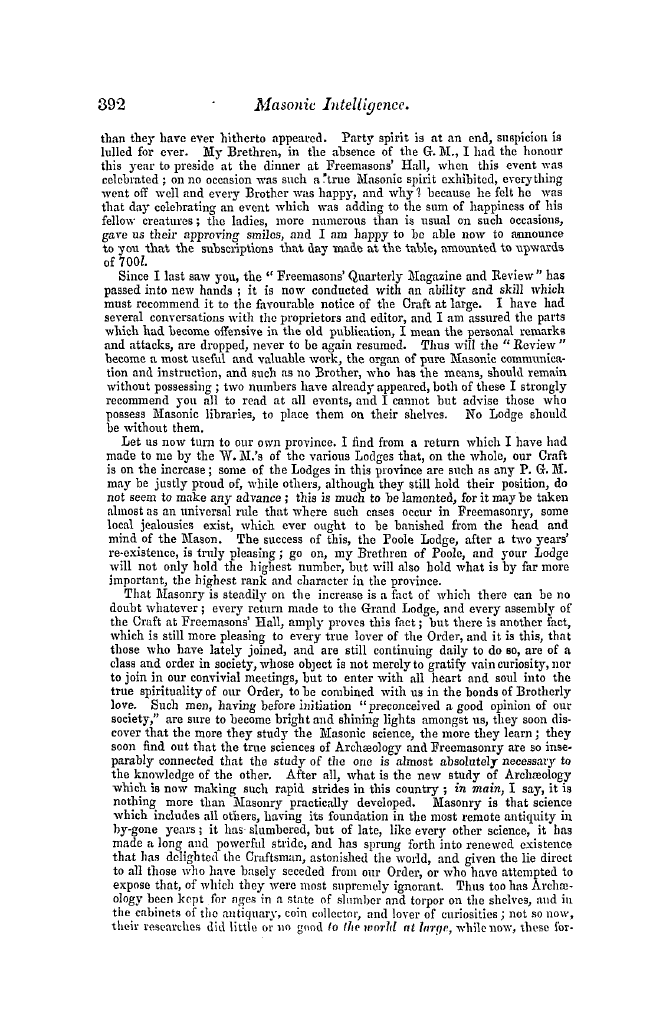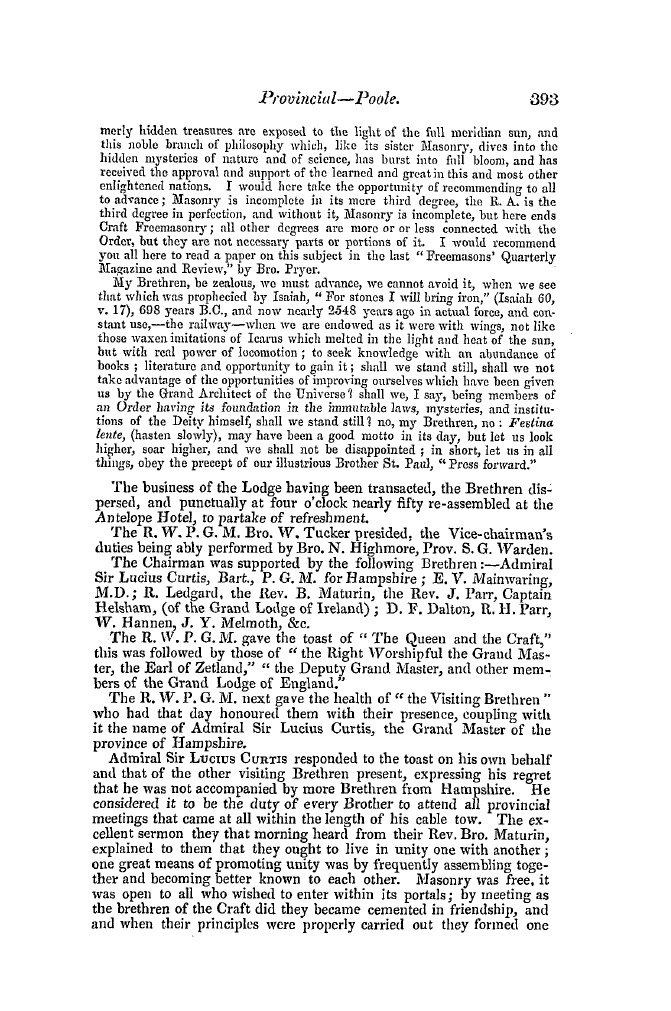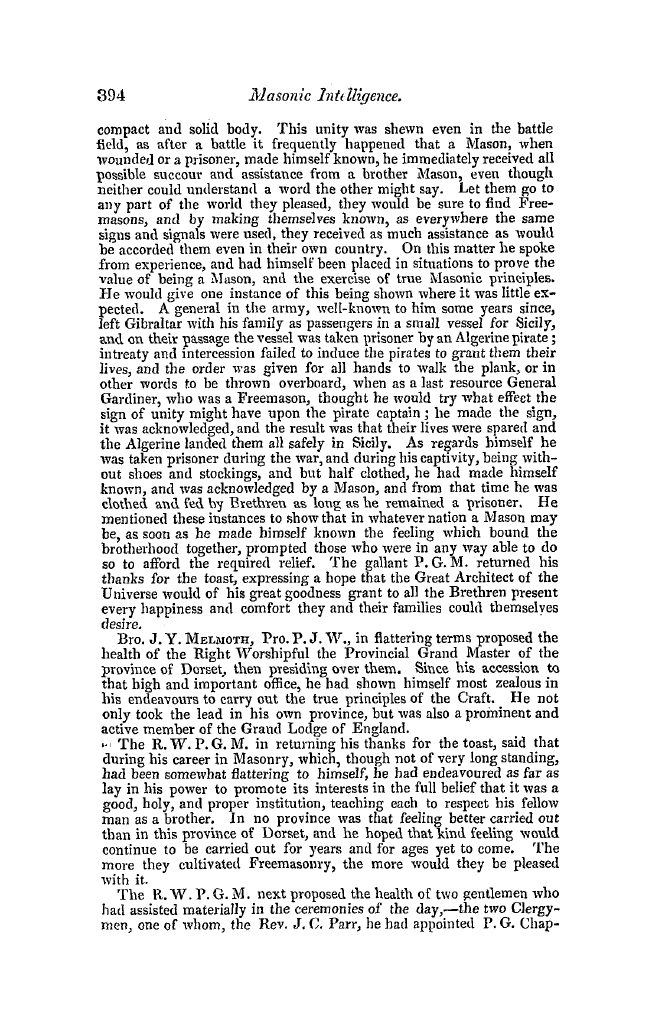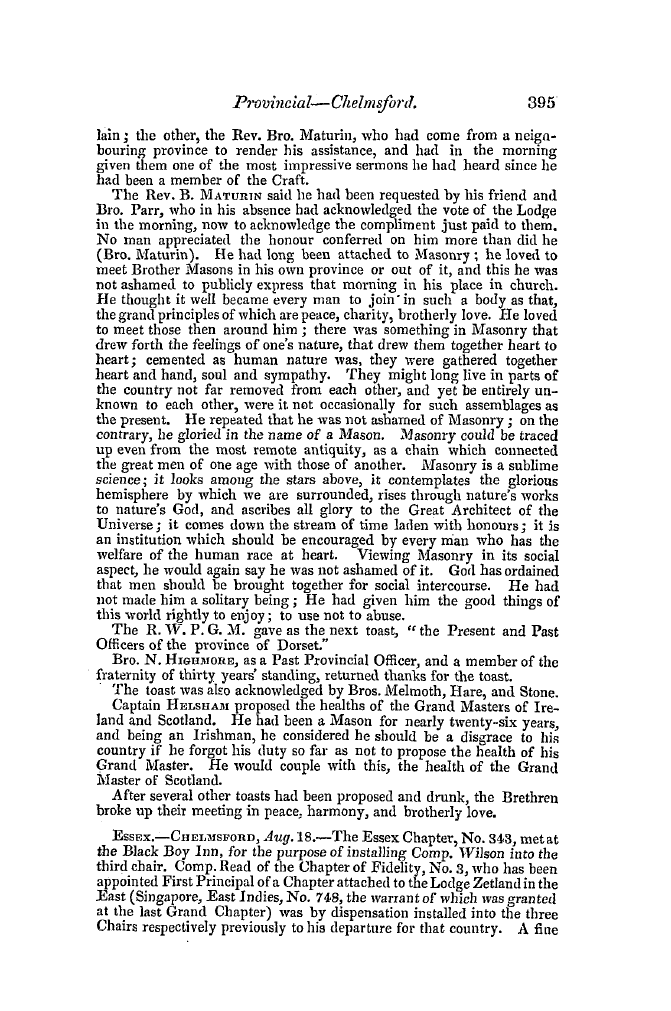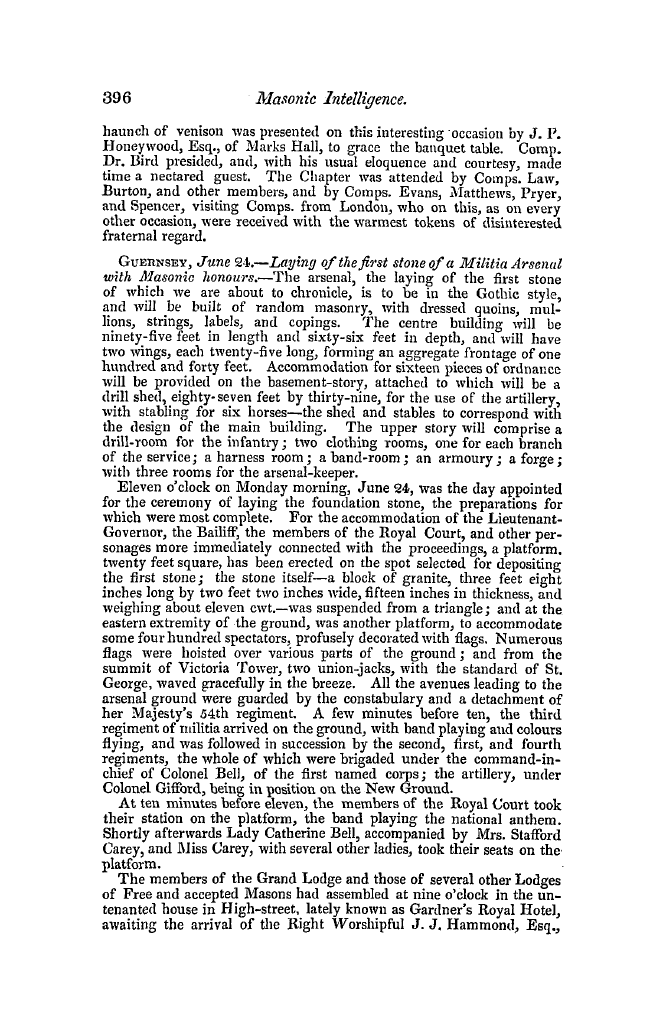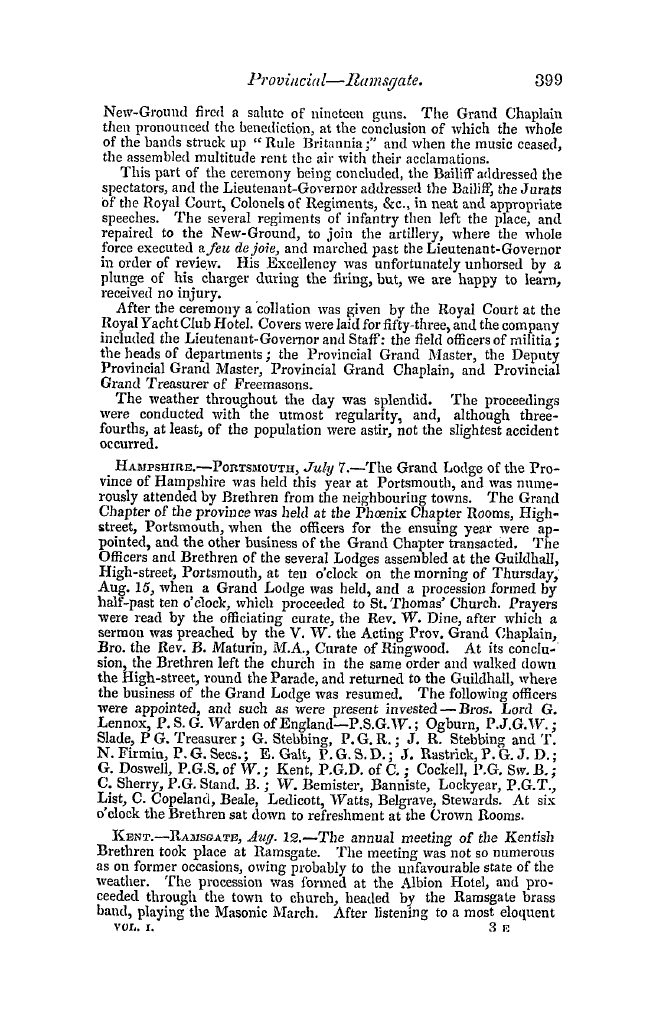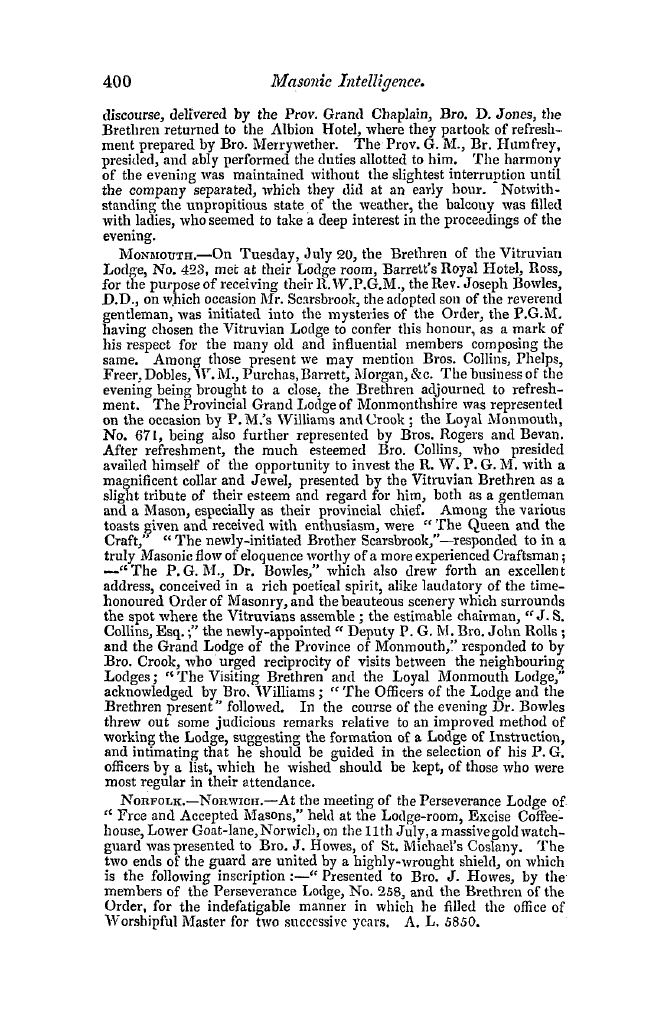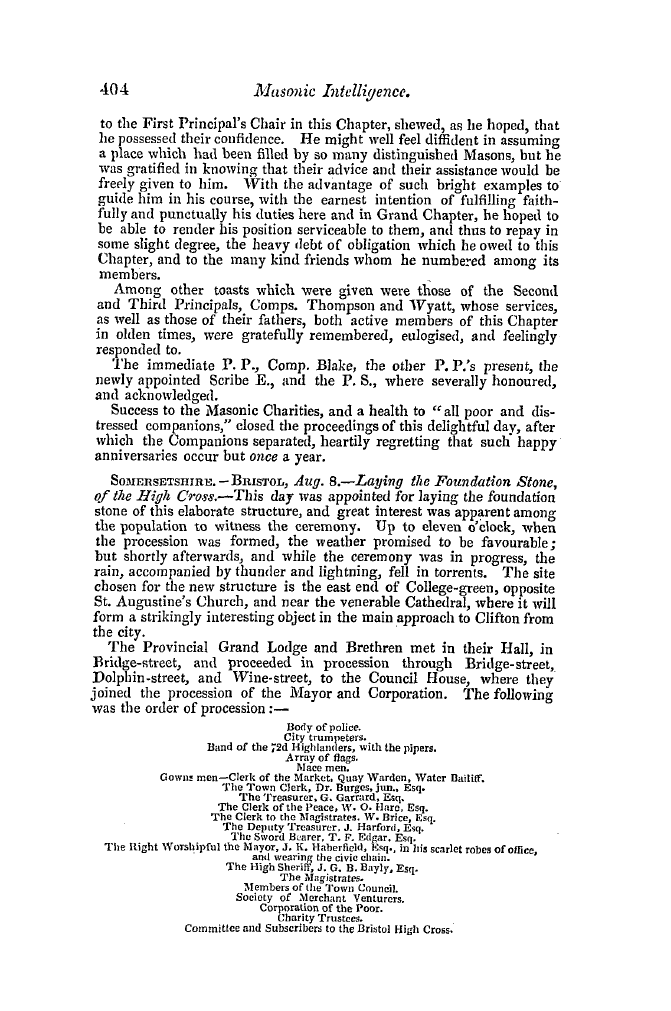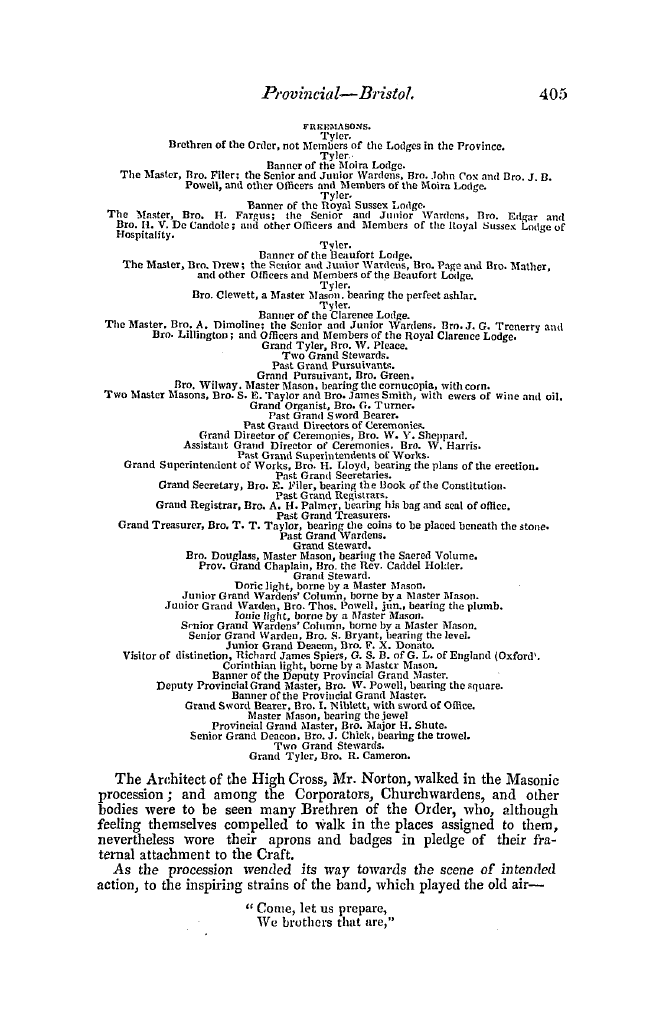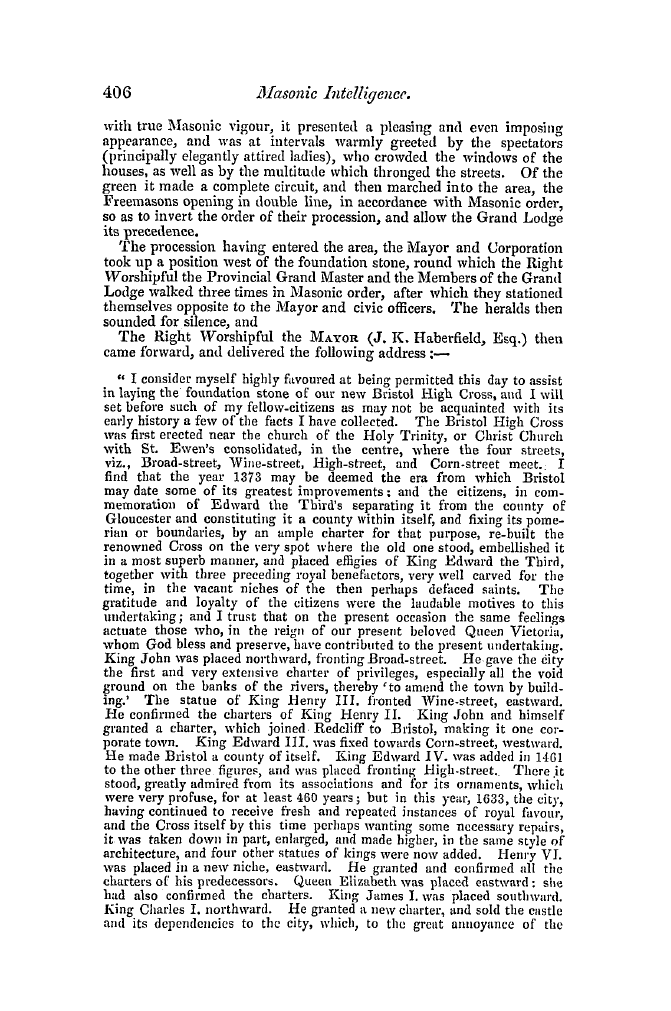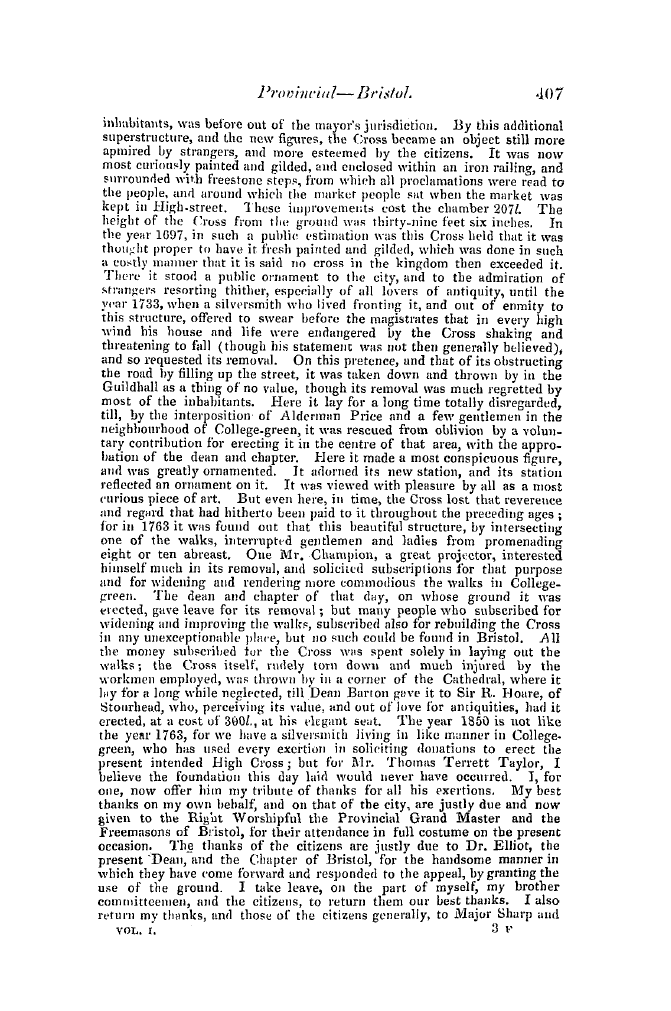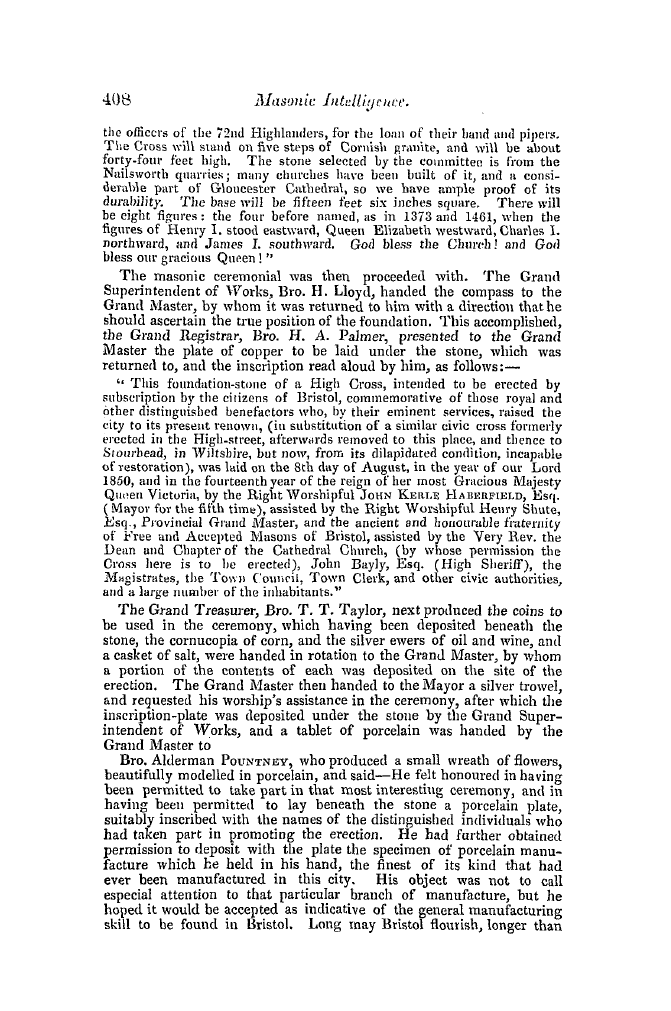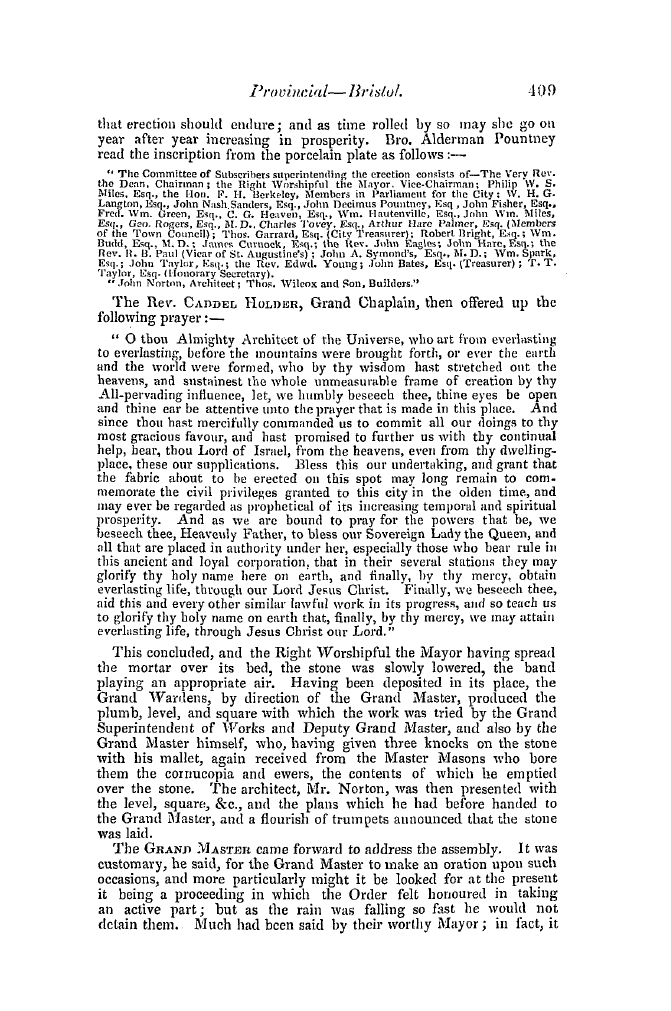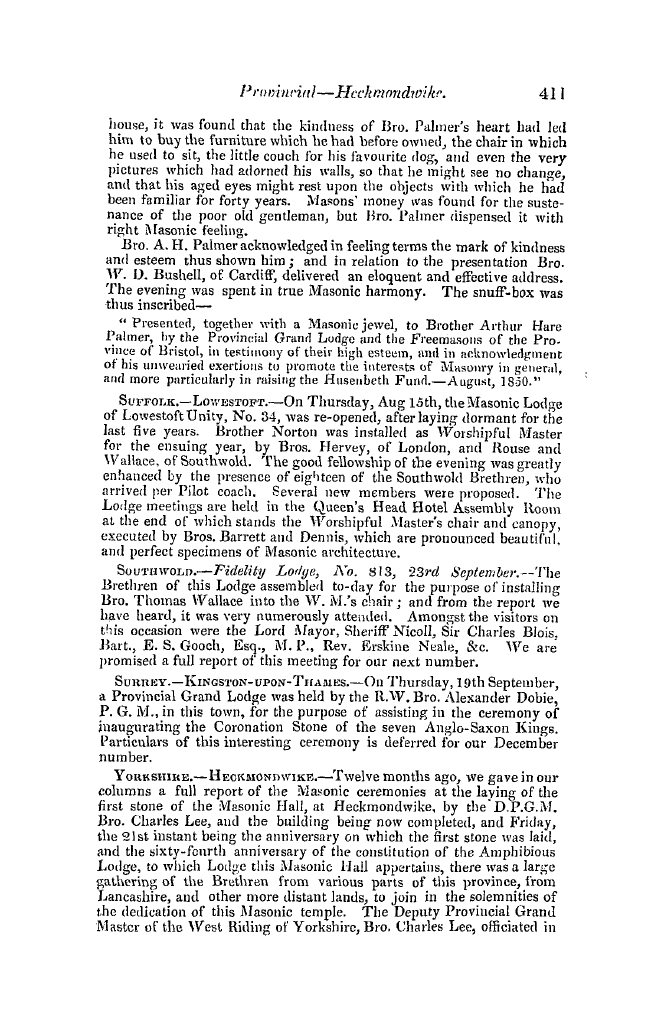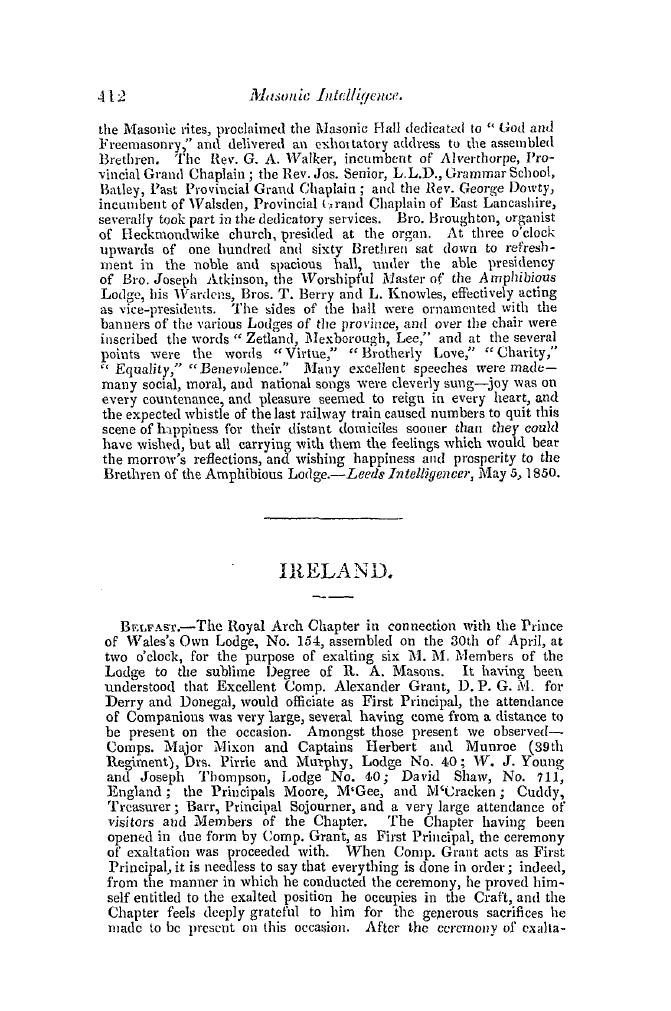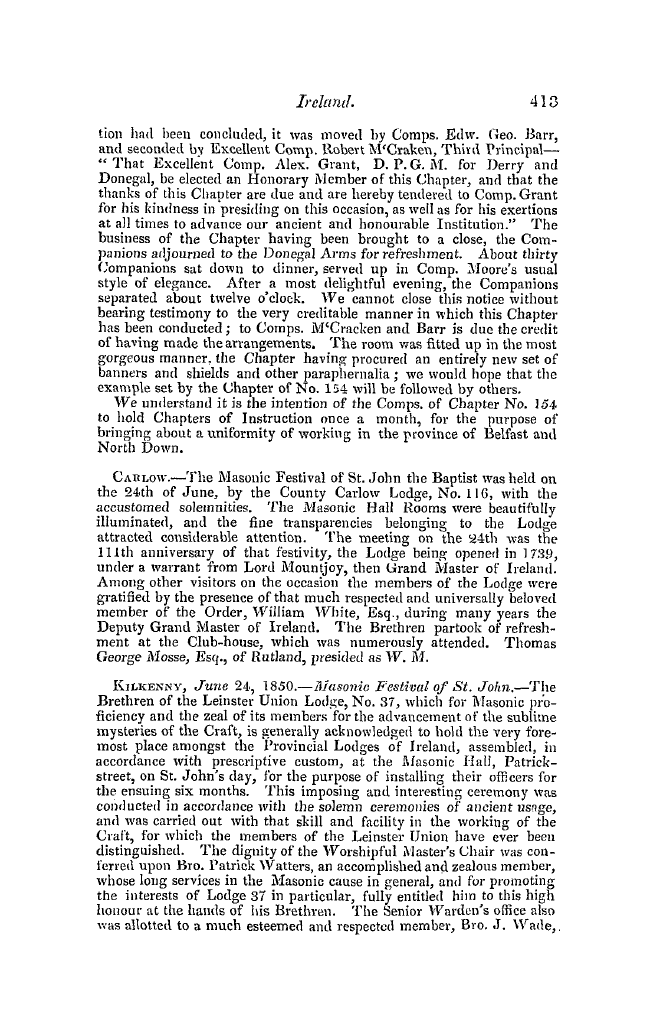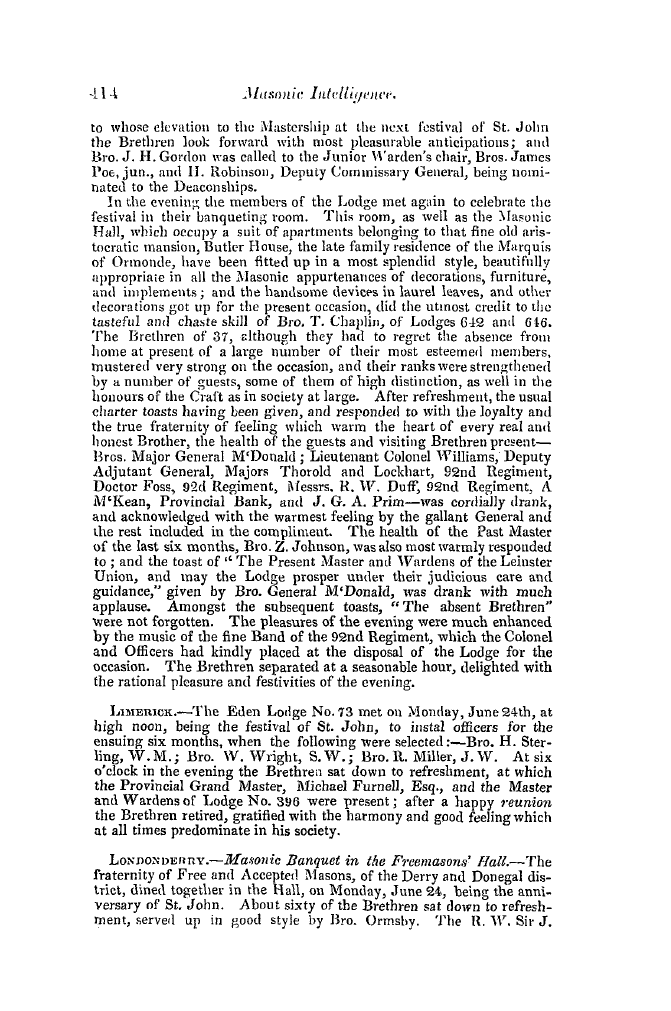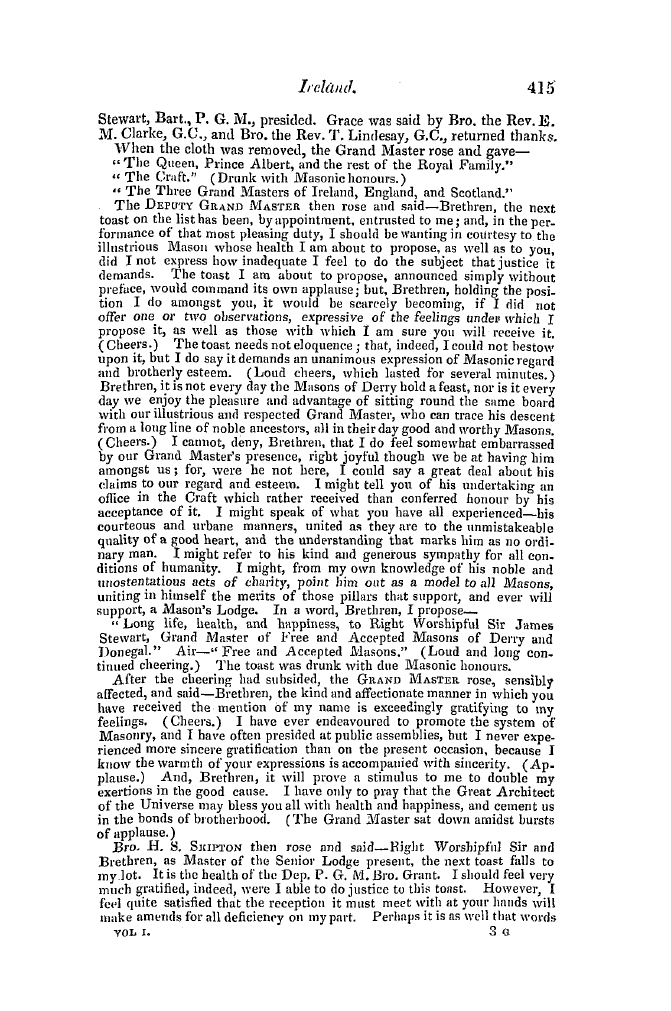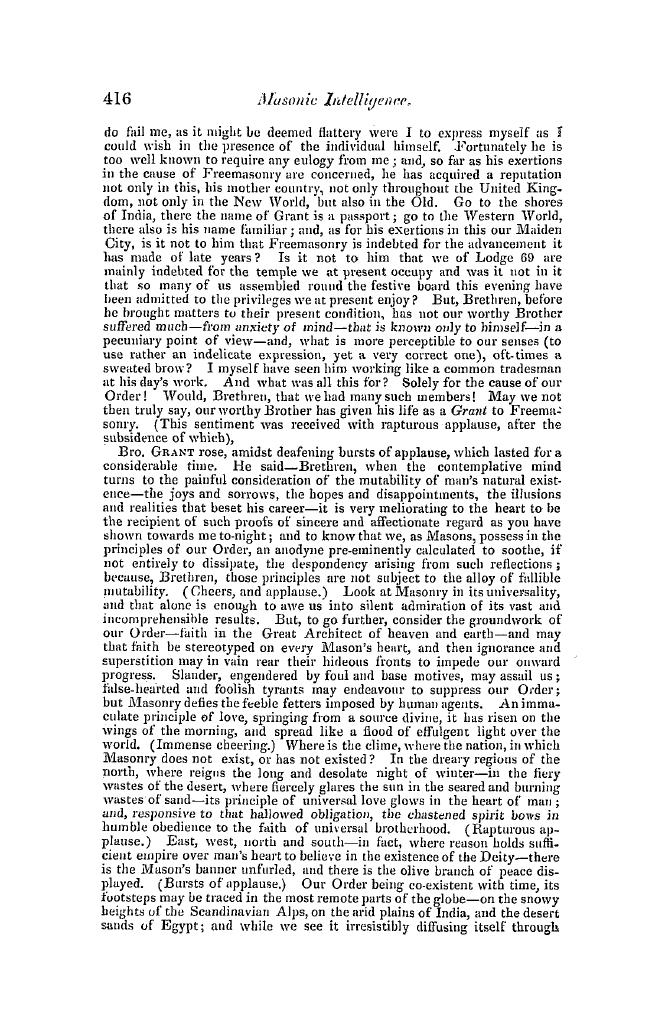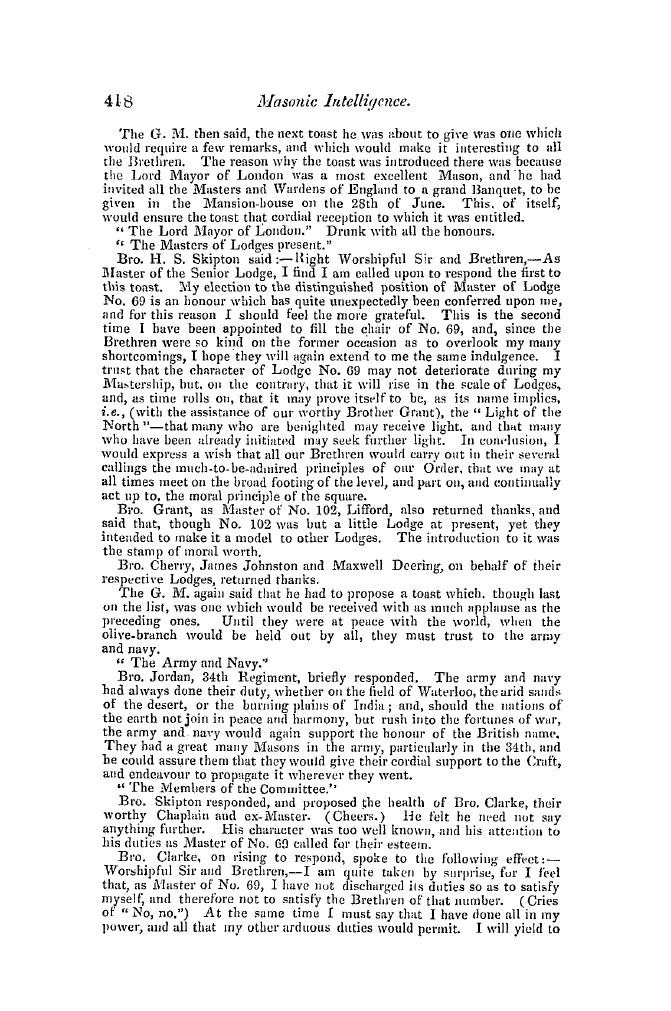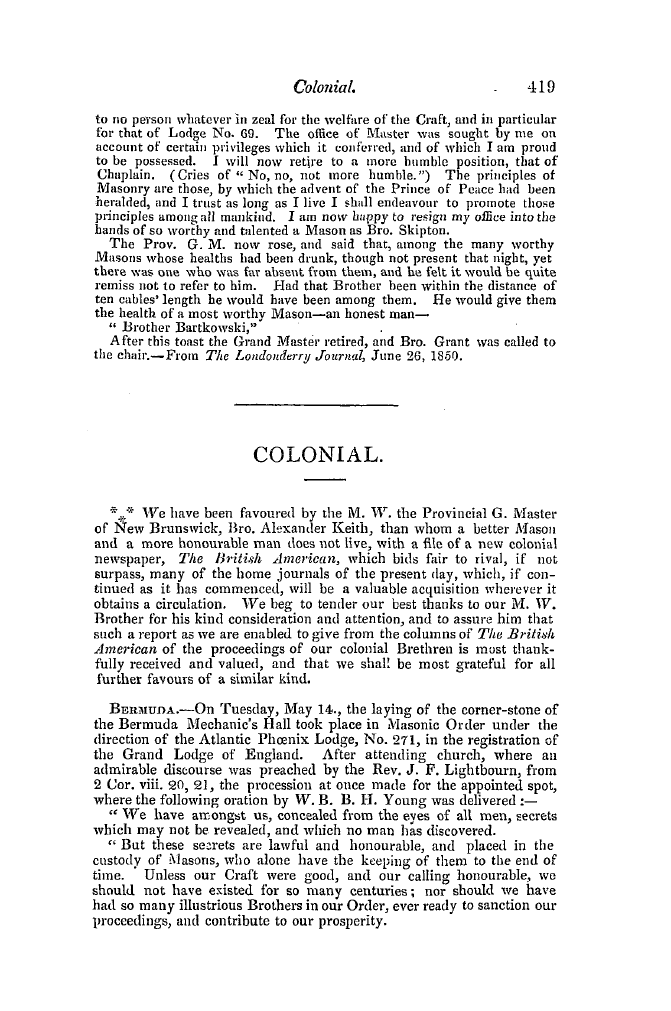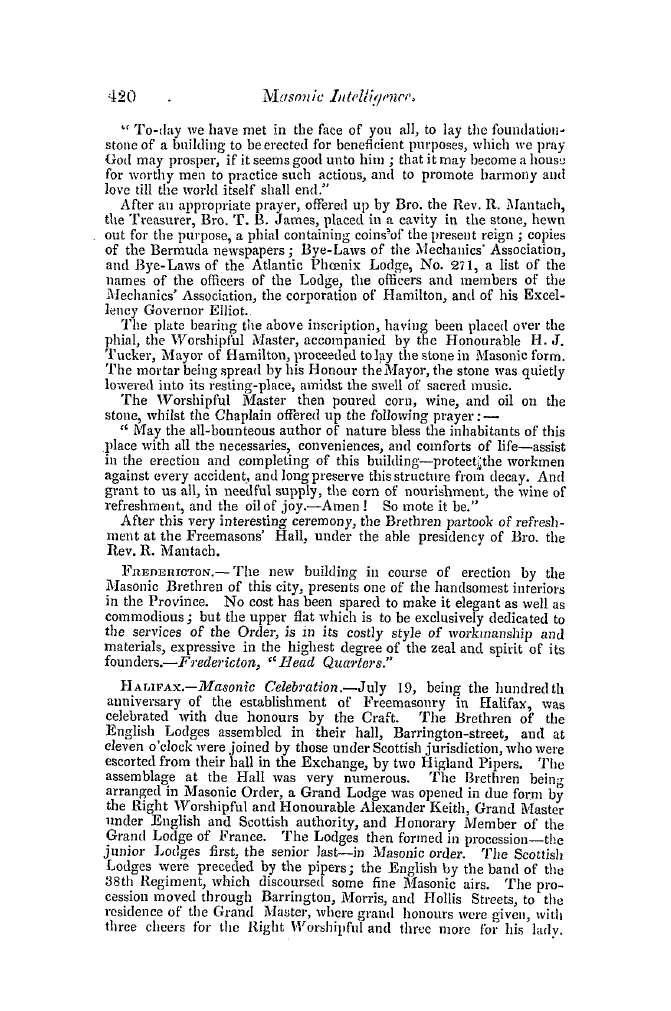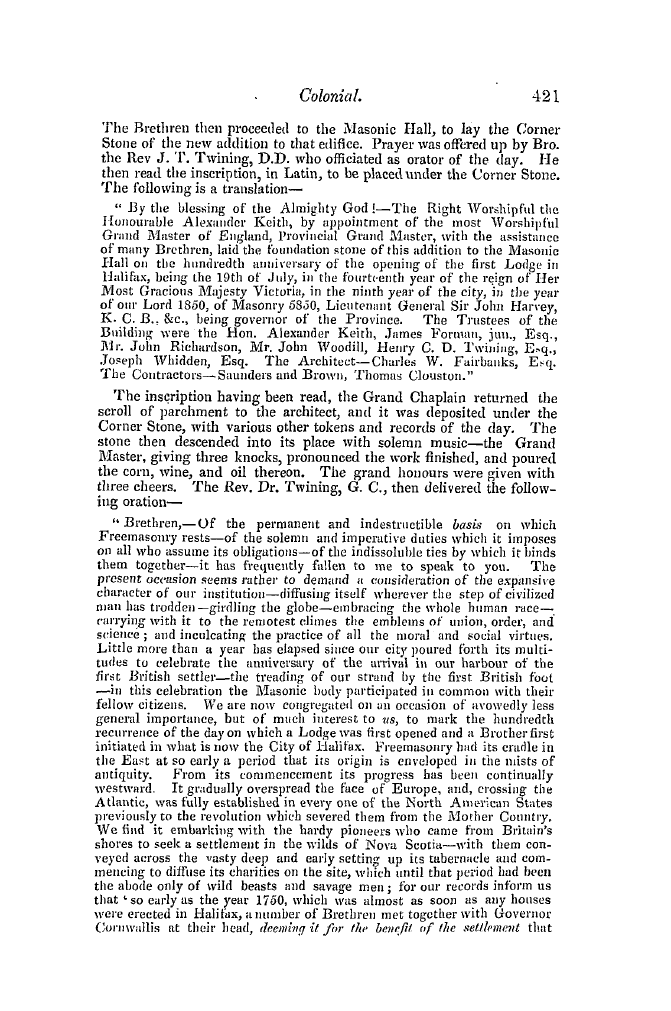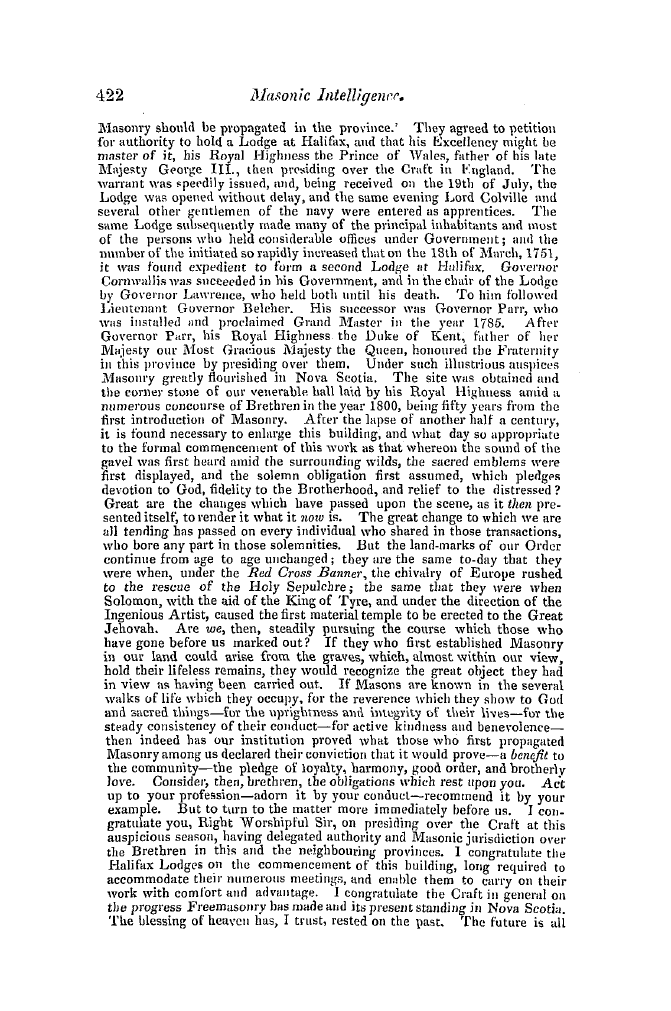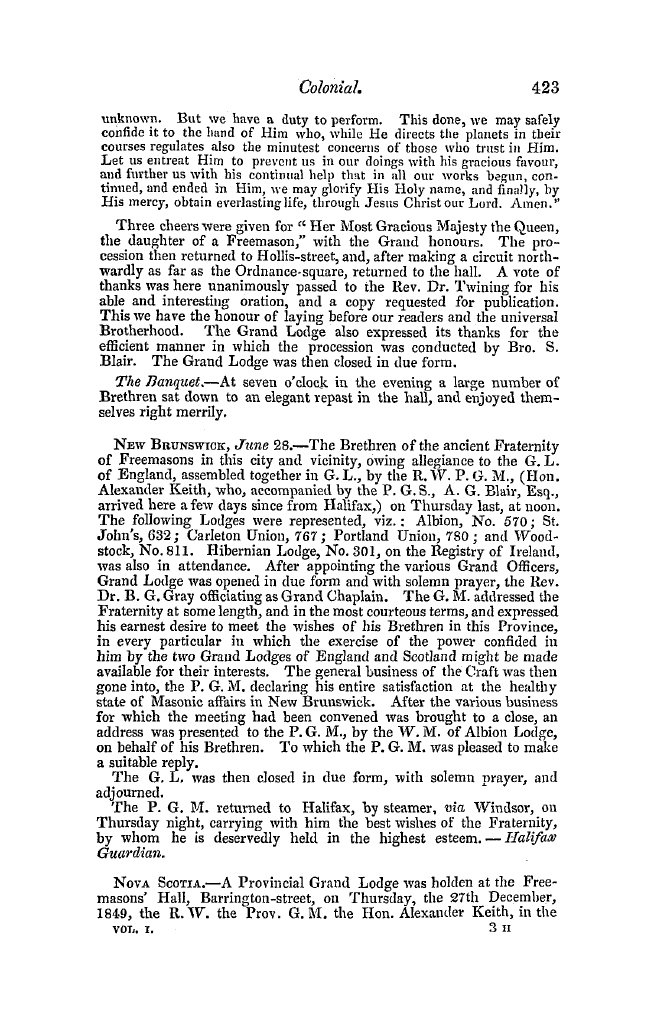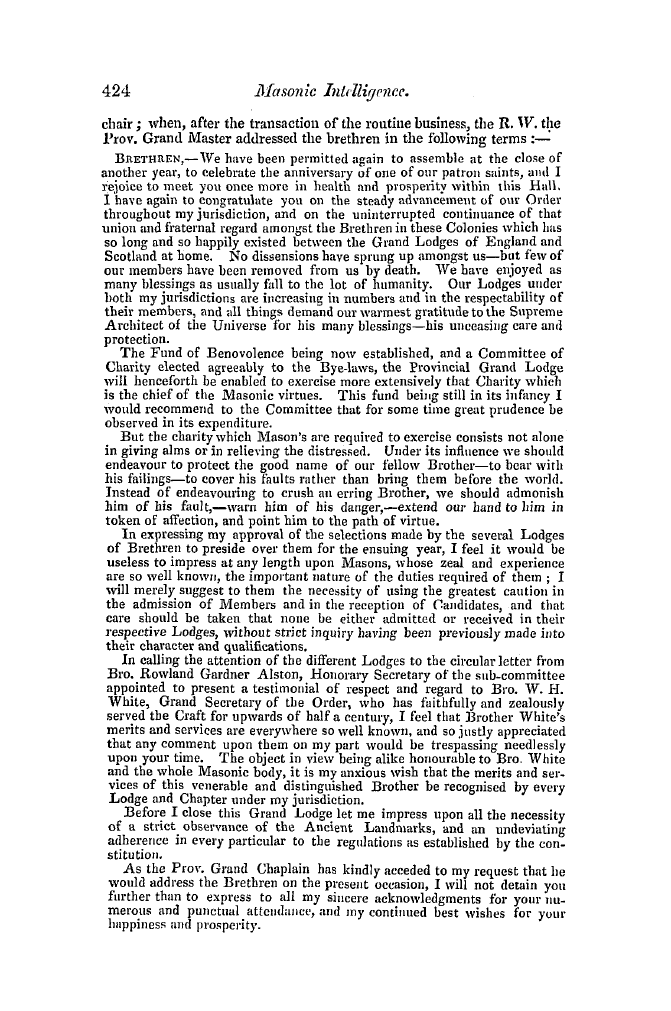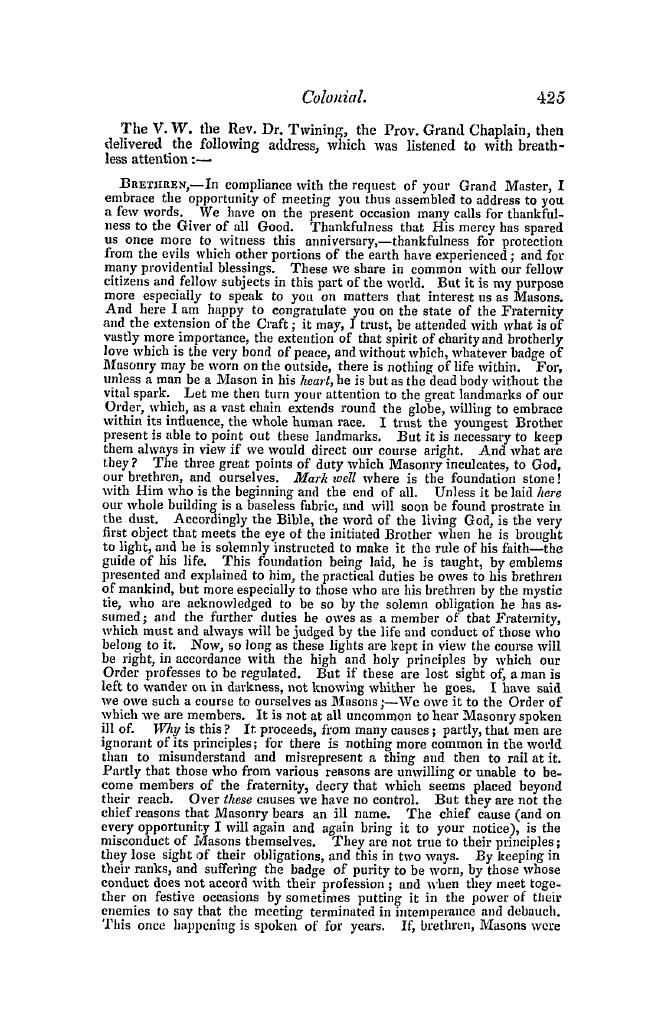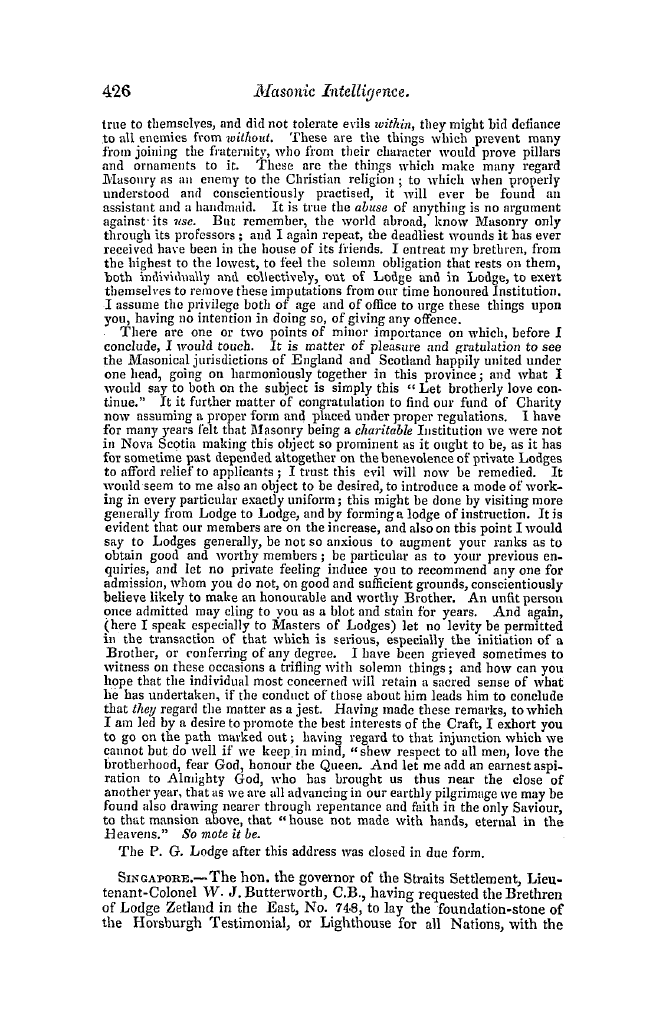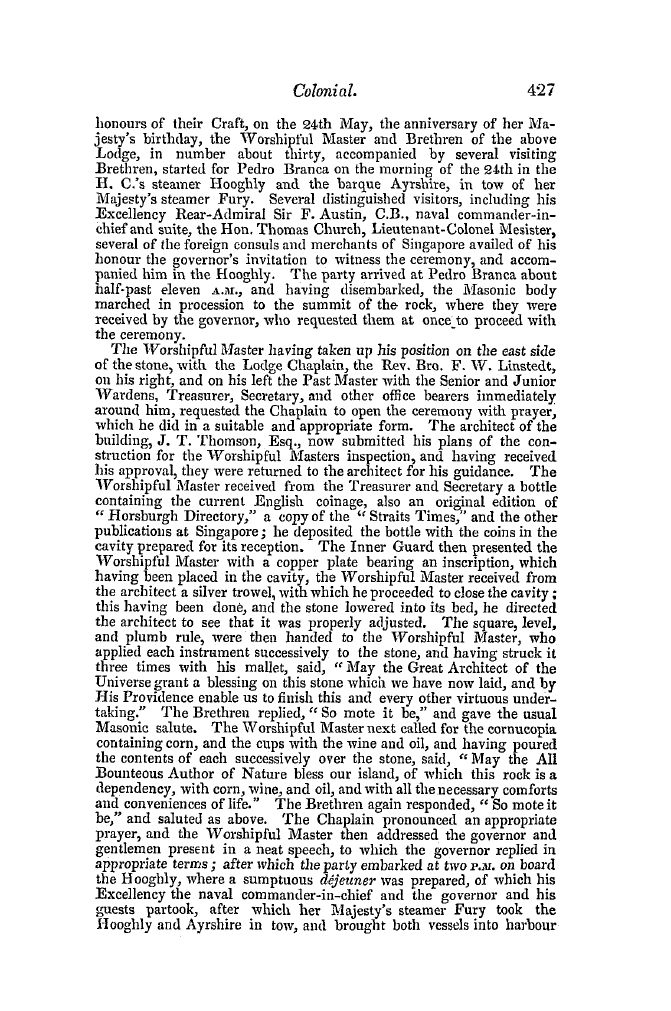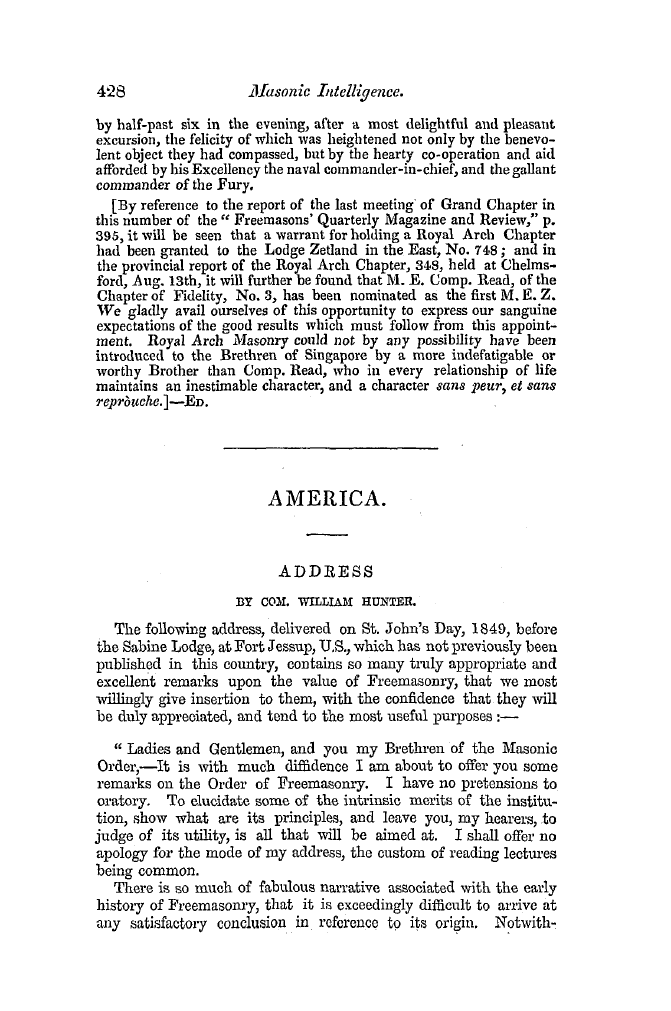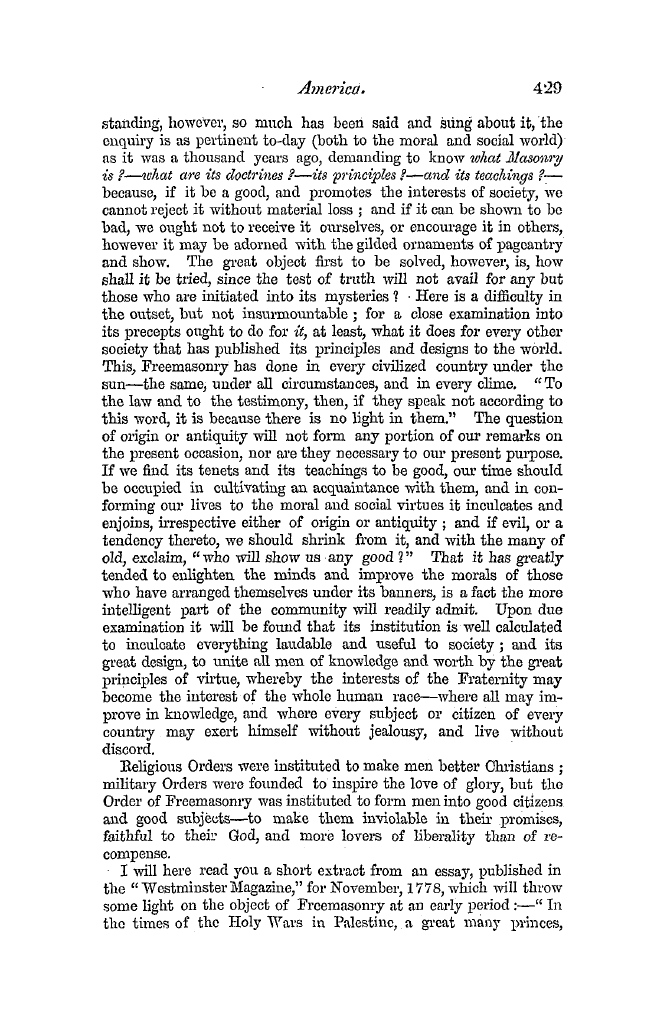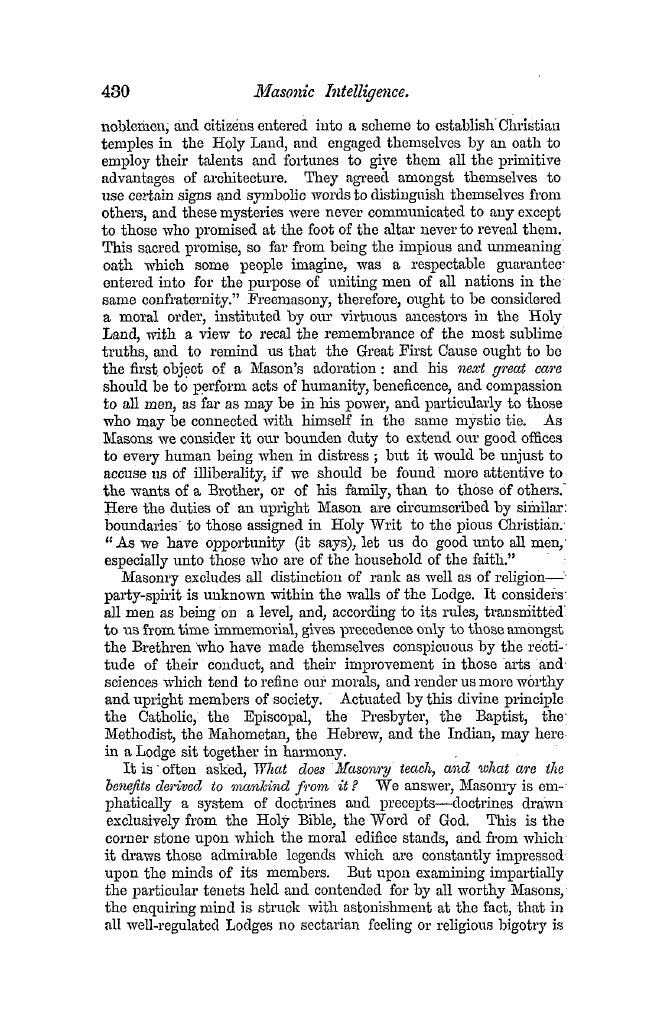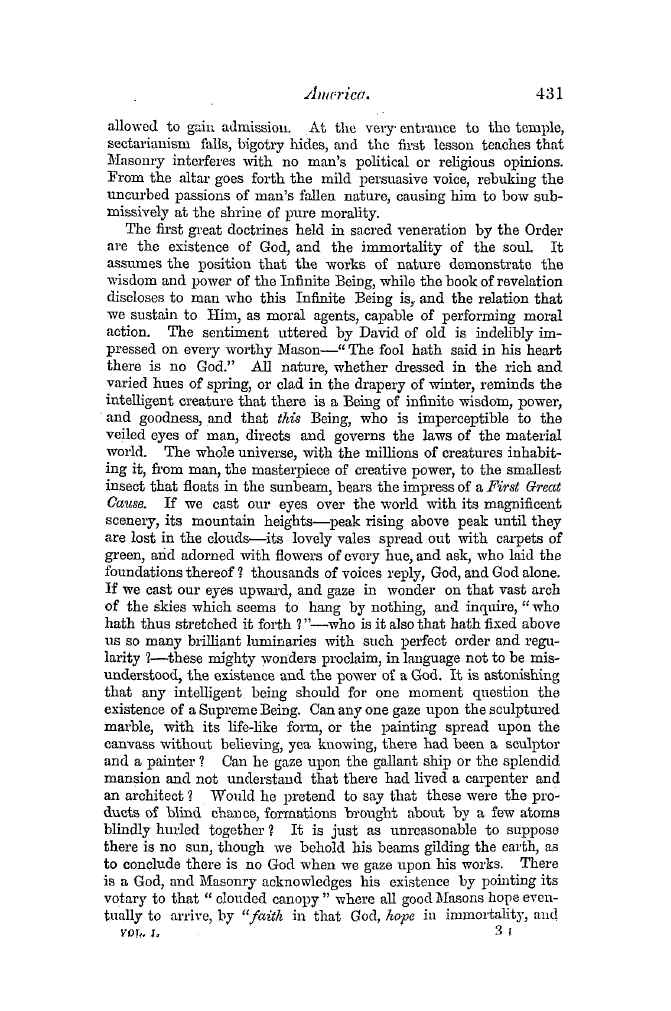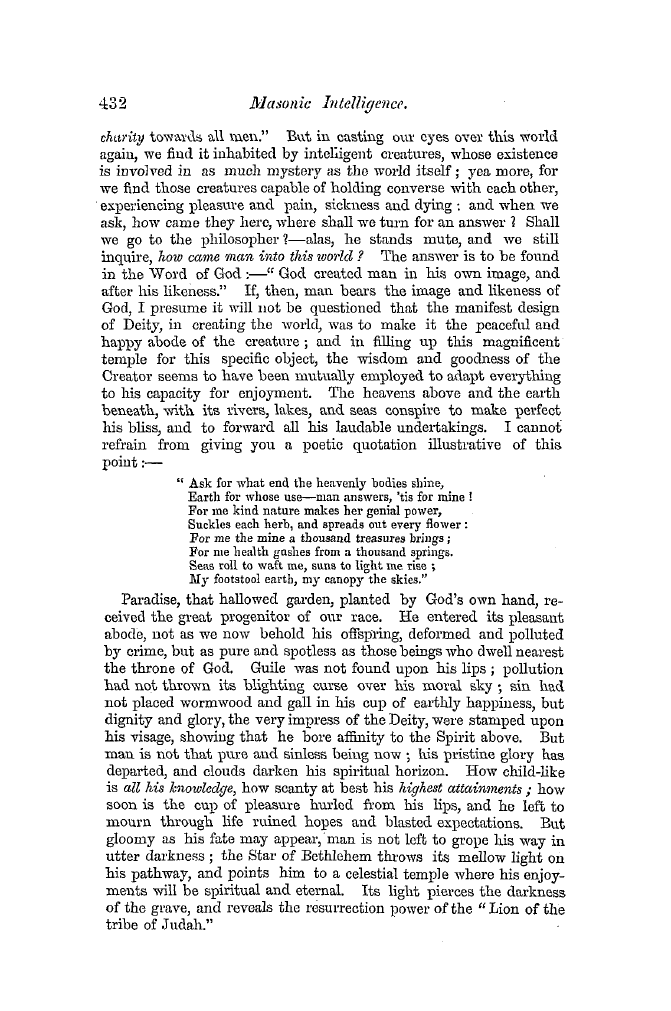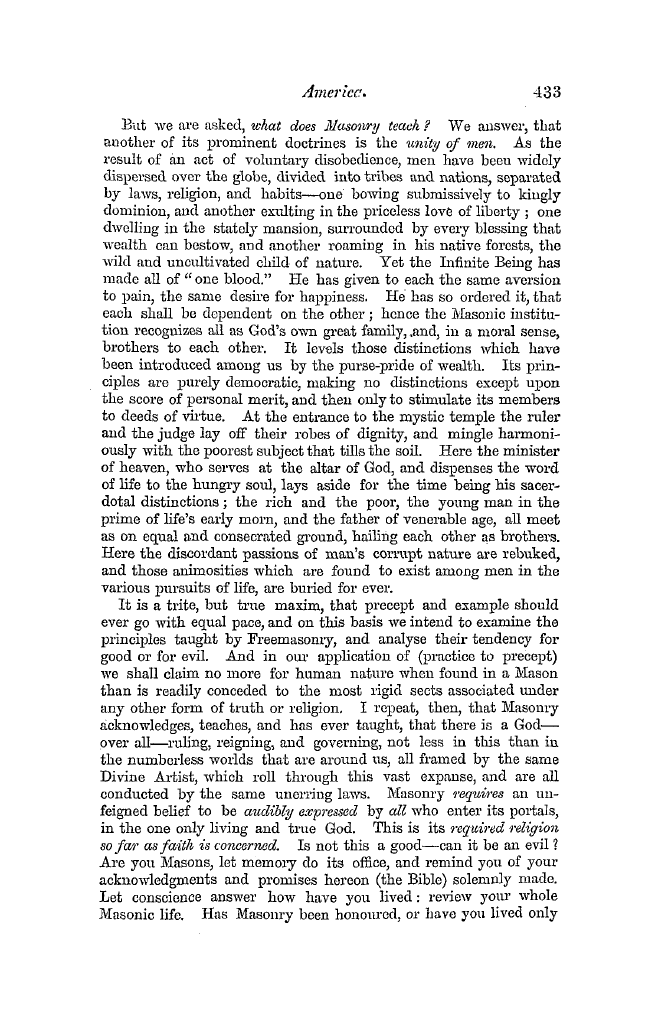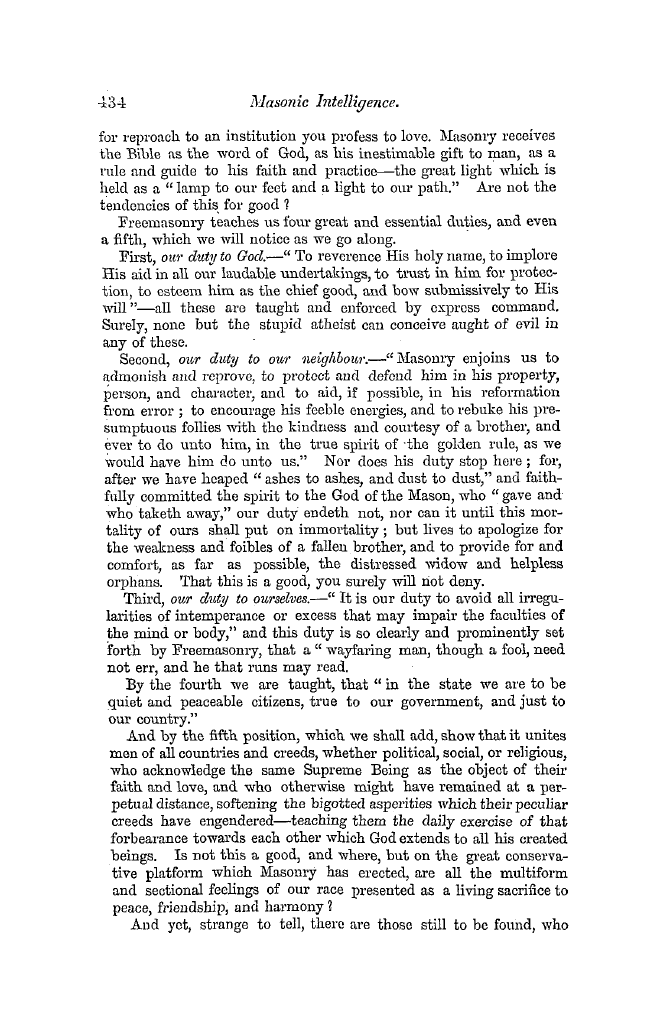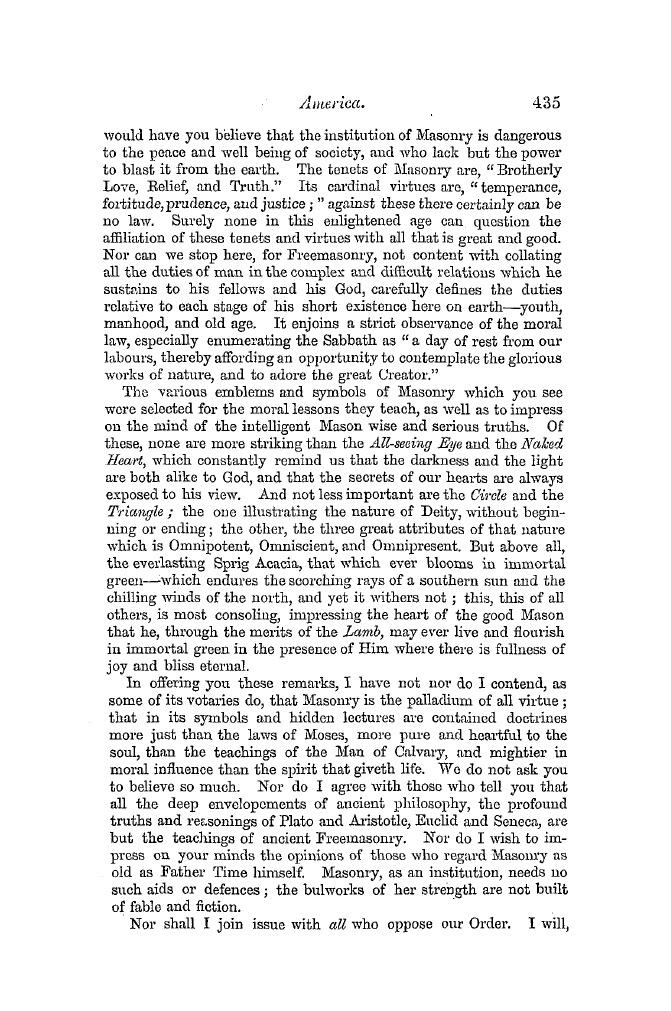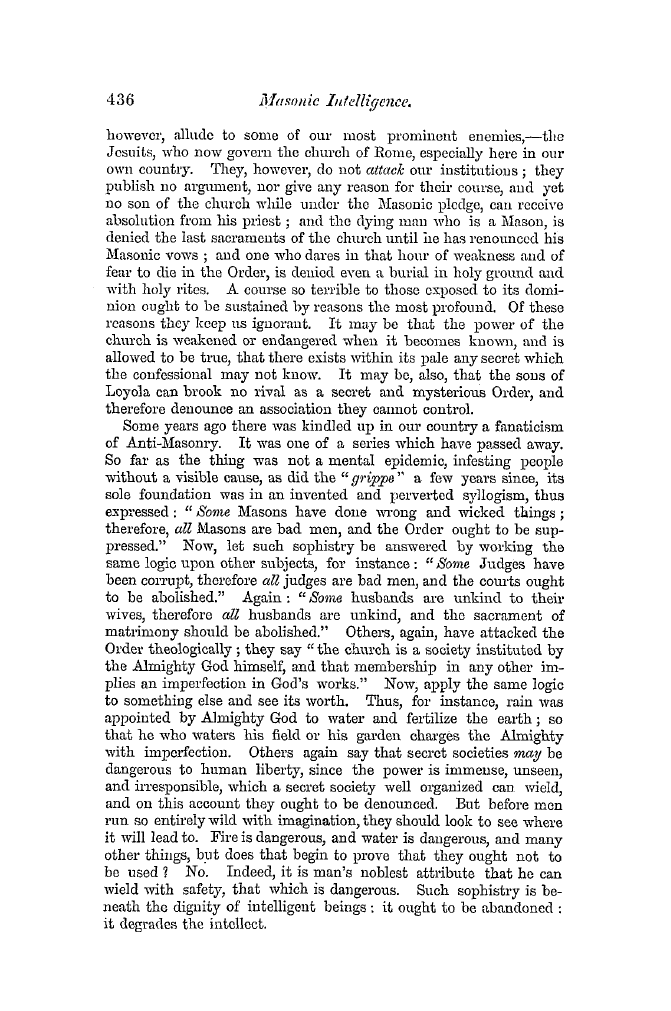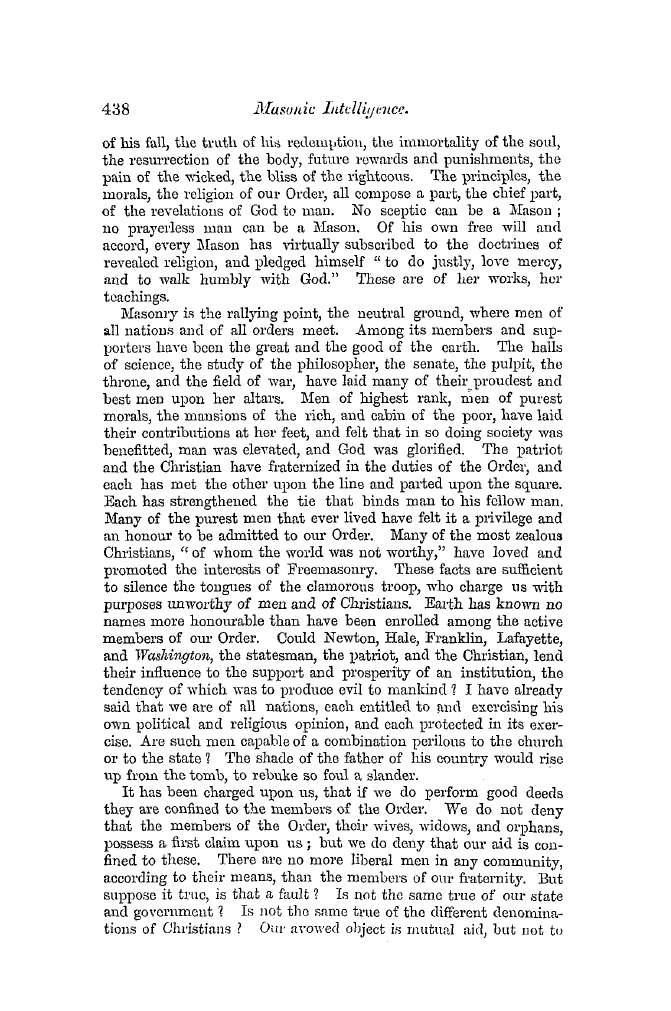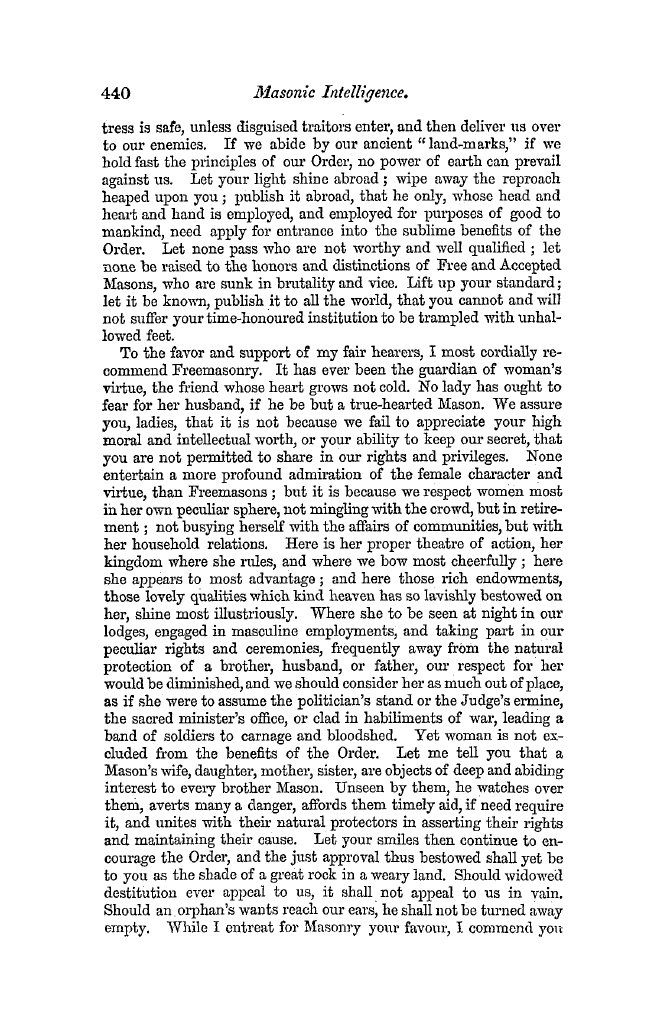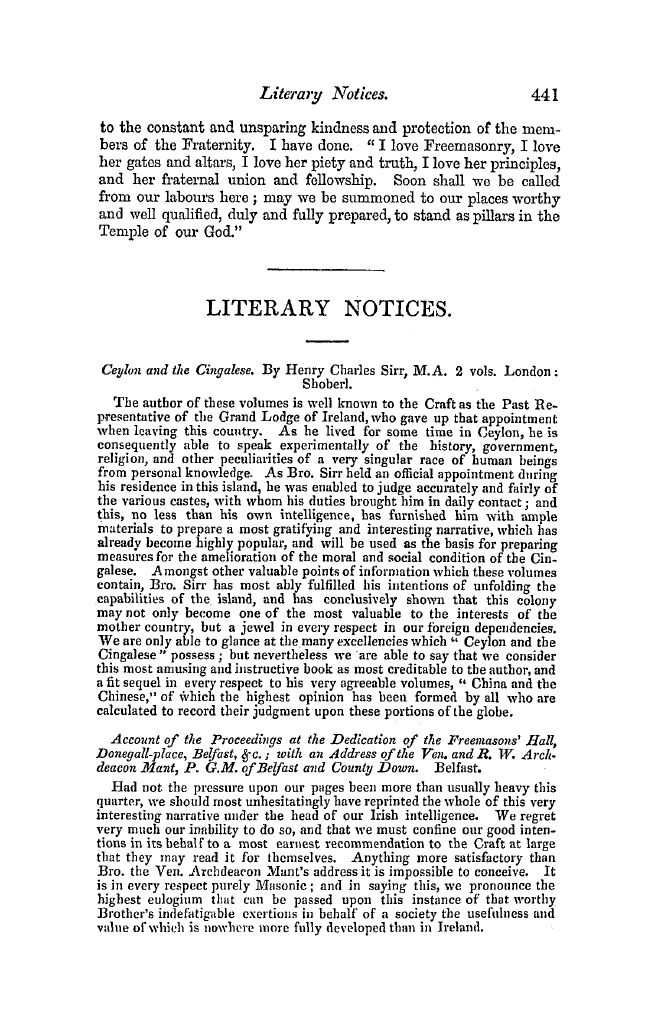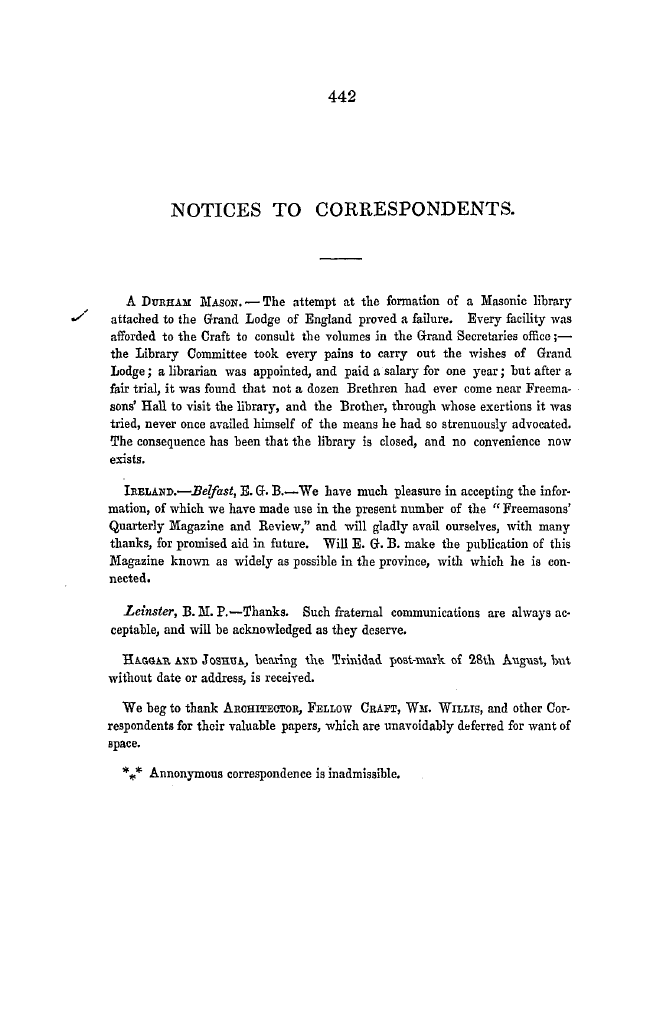-
Articles/Ads
Article PROVINCIAL. ← Page 16 of 22 →
Note: This text has been automatically extracted via Optical Character Recognition (OCR) software.
Provincial.
with true Masonic vigour , it presented a pleasing and even imposing appearance , and was at intervals warmly greeted by the spectators ( principally elegantly attired ladies ) , who crowded the windows of the houses , as well as by the multitude which thronged the streets . Of the green it made a complete circuit , and then marched into the area , the Freemasons opening in double line , in accordance with Masonic order , so as to invert the order of their procession , and allow the Grand Lodge
its precedence . The procession having entered the area , the Mayor and Corporation took up a position west of the foundation stone , round which the Right Worshipful the Provincial Grand Master and the Members of the Grand Lodge walked three times in Masonic order , after which they stationed themselves opposite to the Mayor and civic officers . The heralds then sounded for silence , and The Right Worshipful the MAYOR ( J . K . Haberfield , Esq . ) then came forward , and delivered the following address : —
" I consider myself highly favoured at being permitted this day to assist in laying the foundation stone of our new Bristol High Cross , aud I will set before such of my fellow-citizens as may not be acquainted witli its early history a few of the facts I have collected . The Bristol High Cross was first erected near the church of the Holy Trinity , or Christ Church with St . Ewen's consolidated , in the centre , where the four streets , viz ., Broad-street , Wine-street , High-street , and Corn-street meet .: I find that the year 1373 may be deemed the era from which Bristol
may date some of its greatest improvements : and the citizens , in commemoration of Edward the Third ' s separating it from the county of Gloucester and constituting it a county within itself , and fixing its pomerian or boundaries , by an ample charter for that purpose , re-built the renowned Cross on the very spot where the old one stood , embellished it in a most superb manner , and placed effigies of King Edward the Third , together with three preceding royal benefactors , very well carved for the time , in the vacant niches of the then perhaps defaced saints . The
gratitude and loyalty of the citizens were the laudable motives to this undertaking ; and I trust that on the present occasion the same feelings actuate those who , in the reign of our present beloved Queen Victoria , whom God bless and preserve , have contributed to the present undertaking . King John was placed northward , fronting Broad-street . He gave the city the first and very extensive charter of privileges , especially all the void ground on the banks of the rivers , thereby 'to amend the town by building . ' The statue of King Henry III . fronted Wine-street , eastward .
He confirmed the charters of King Henry II . King John and himself granted a charter , which joined Redclifif to Bristol , making it one corporate town . King Edward III . was fixed towards Corn-street , westward . He made Bristol a county of itself . King Edward IV . was added in 1401 to the other three figures , and was placed fronting High-street . There . it stood , greatly admired from its associations and for its ornaments , which were very profuse , for at least 460 years ; but in this year , 1633 , the city , having continued to receive fresh and repeated instances of royal favour ,
and the Cross itself by this time perhaps wanting some necessary repairs , it was taken down in part , enlarged , and made higher , in the same style of architecture , and four other statues of kings were now added . Henry VI . was placed in a new niche , eastward . He granted and confirmed all the charters of his predecessors . Queen Elizabeth was placed eastward : she had also confirmed the charters . King James I . was placed southward . King Charles I . northward . He granted a new charter , and sold the castle and its dependencies to thc city , which , to thc great annoyance of the
Note: This text has been automatically extracted via Optical Character Recognition (OCR) software.
Provincial.
with true Masonic vigour , it presented a pleasing and even imposing appearance , and was at intervals warmly greeted by the spectators ( principally elegantly attired ladies ) , who crowded the windows of the houses , as well as by the multitude which thronged the streets . Of the green it made a complete circuit , and then marched into the area , the Freemasons opening in double line , in accordance with Masonic order , so as to invert the order of their procession , and allow the Grand Lodge
its precedence . The procession having entered the area , the Mayor and Corporation took up a position west of the foundation stone , round which the Right Worshipful the Provincial Grand Master and the Members of the Grand Lodge walked three times in Masonic order , after which they stationed themselves opposite to the Mayor and civic officers . The heralds then sounded for silence , and The Right Worshipful the MAYOR ( J . K . Haberfield , Esq . ) then came forward , and delivered the following address : —
" I consider myself highly favoured at being permitted this day to assist in laying the foundation stone of our new Bristol High Cross , aud I will set before such of my fellow-citizens as may not be acquainted witli its early history a few of the facts I have collected . The Bristol High Cross was first erected near the church of the Holy Trinity , or Christ Church with St . Ewen's consolidated , in the centre , where the four streets , viz ., Broad-street , Wine-street , High-street , and Corn-street meet .: I find that the year 1373 may be deemed the era from which Bristol
may date some of its greatest improvements : and the citizens , in commemoration of Edward the Third ' s separating it from the county of Gloucester and constituting it a county within itself , and fixing its pomerian or boundaries , by an ample charter for that purpose , re-built the renowned Cross on the very spot where the old one stood , embellished it in a most superb manner , and placed effigies of King Edward the Third , together with three preceding royal benefactors , very well carved for the time , in the vacant niches of the then perhaps defaced saints . The
gratitude and loyalty of the citizens were the laudable motives to this undertaking ; and I trust that on the present occasion the same feelings actuate those who , in the reign of our present beloved Queen Victoria , whom God bless and preserve , have contributed to the present undertaking . King John was placed northward , fronting Broad-street . He gave the city the first and very extensive charter of privileges , especially all the void ground on the banks of the rivers , thereby 'to amend the town by building . ' The statue of King Henry III . fronted Wine-street , eastward .
He confirmed the charters of King Henry II . King John and himself granted a charter , which joined Redclifif to Bristol , making it one corporate town . King Edward III . was fixed towards Corn-street , westward . He made Bristol a county of itself . King Edward IV . was added in 1401 to the other three figures , and was placed fronting High-street . There . it stood , greatly admired from its associations and for its ornaments , which were very profuse , for at least 460 years ; but in this year , 1633 , the city , having continued to receive fresh and repeated instances of royal favour ,
and the Cross itself by this time perhaps wanting some necessary repairs , it was taken down in part , enlarged , and made higher , in the same style of architecture , and four other statues of kings were now added . Henry VI . was placed in a new niche , eastward . He granted and confirmed all the charters of his predecessors . Queen Elizabeth was placed eastward : she had also confirmed the charters . King James I . was placed southward . King Charles I . northward . He granted a new charter , and sold the castle and its dependencies to thc city , which , to thc great annoyance of the


























































